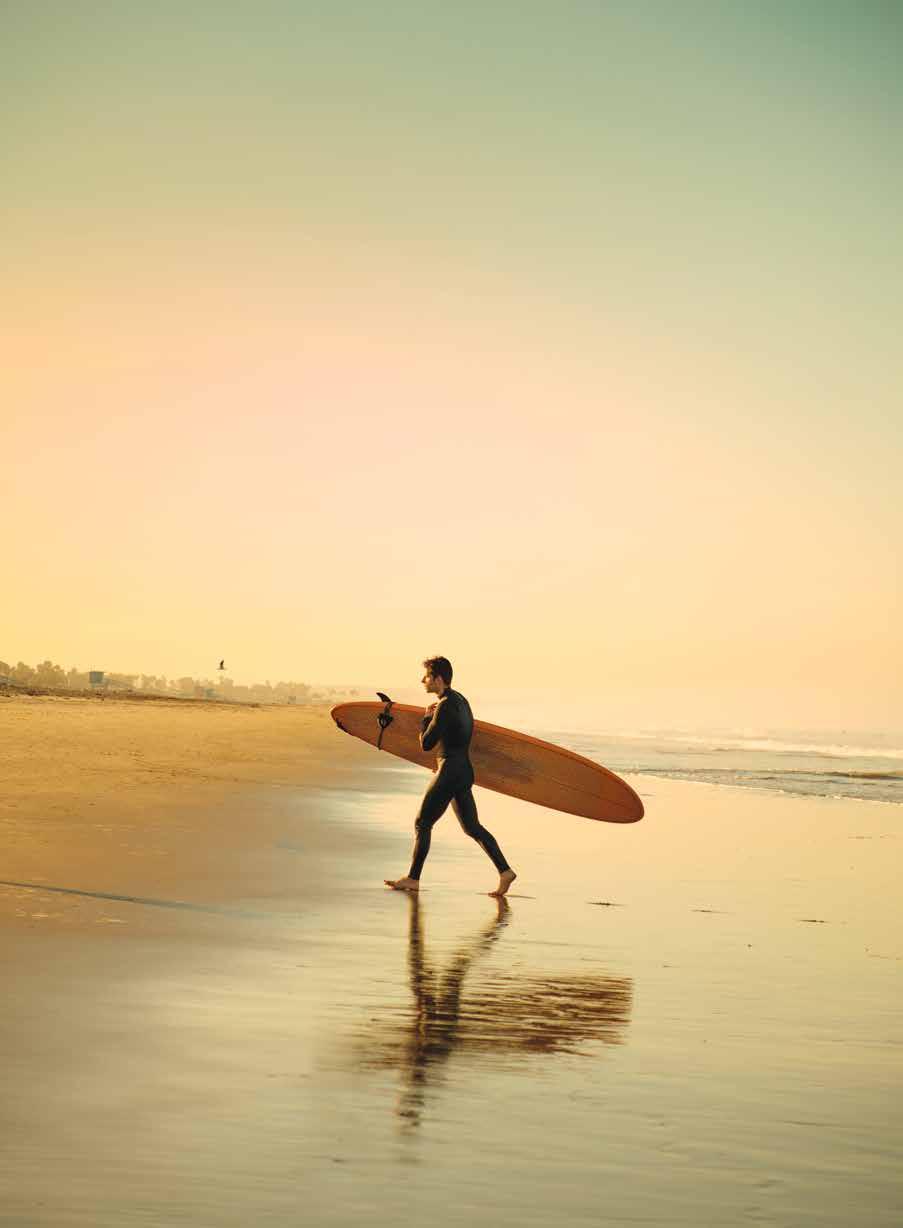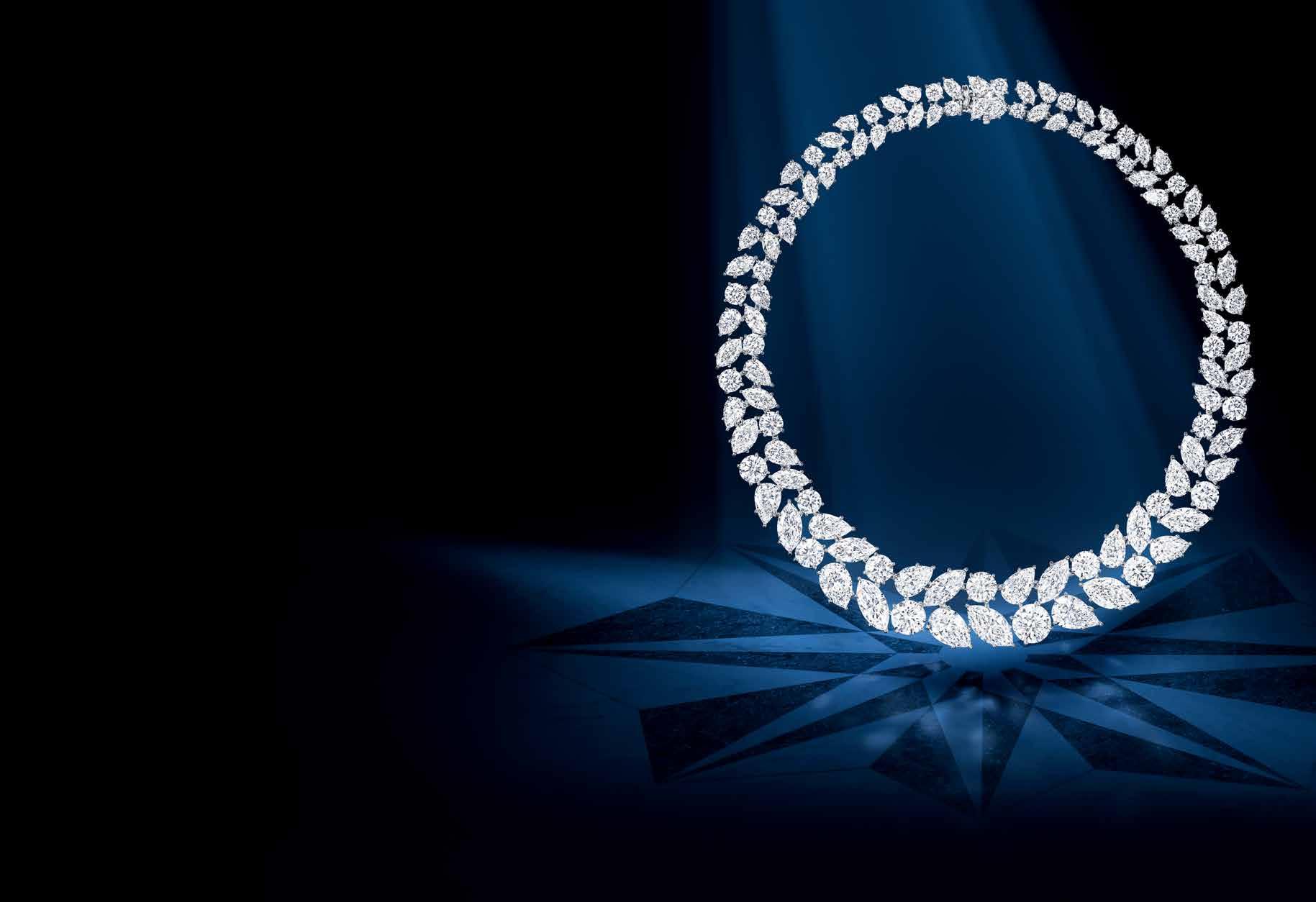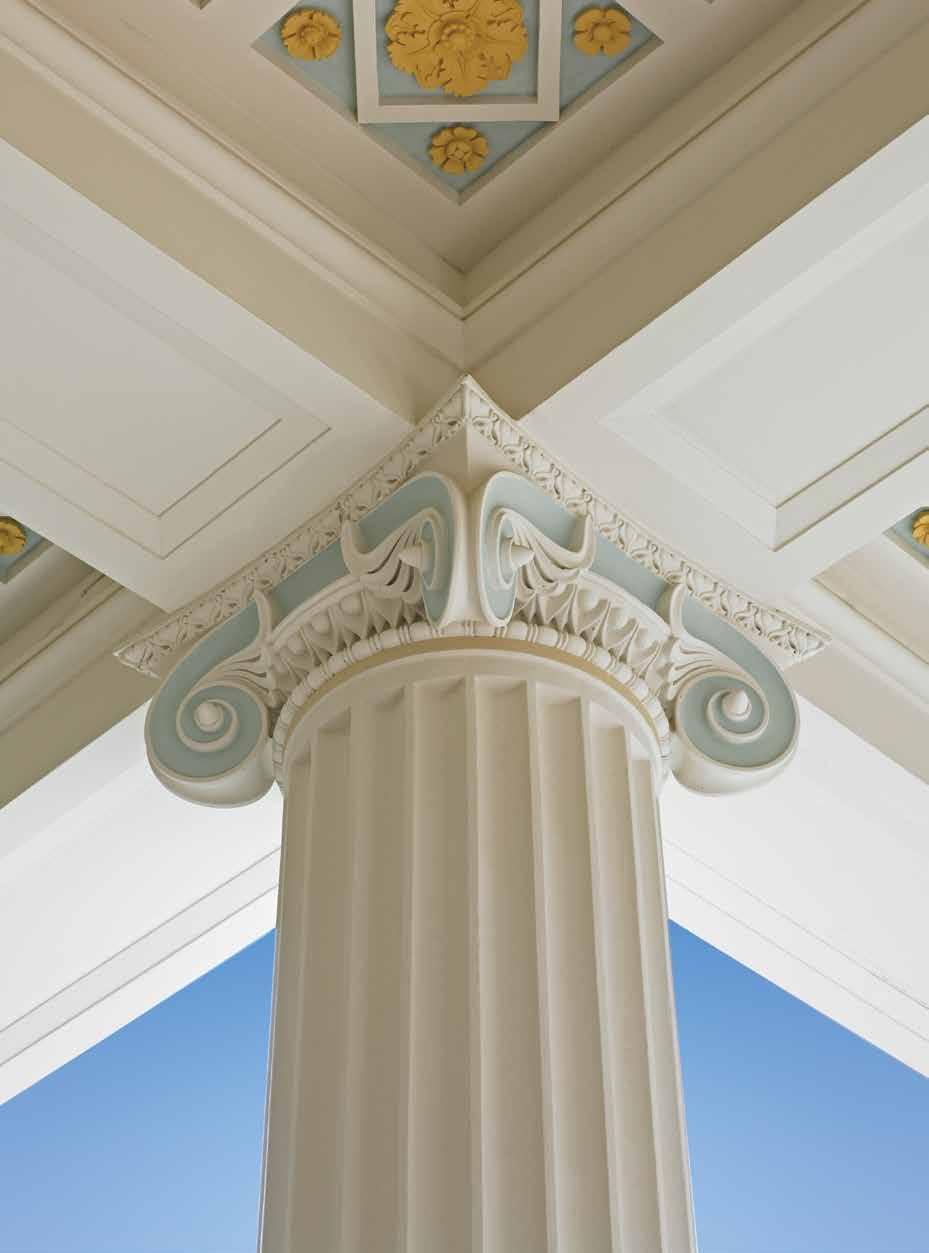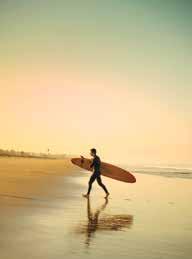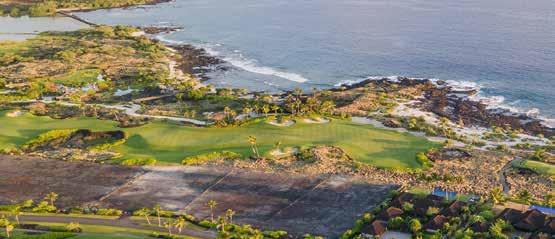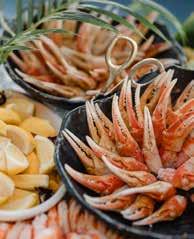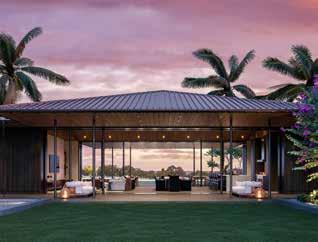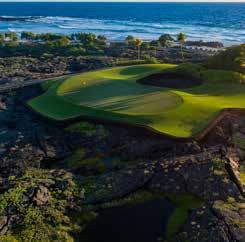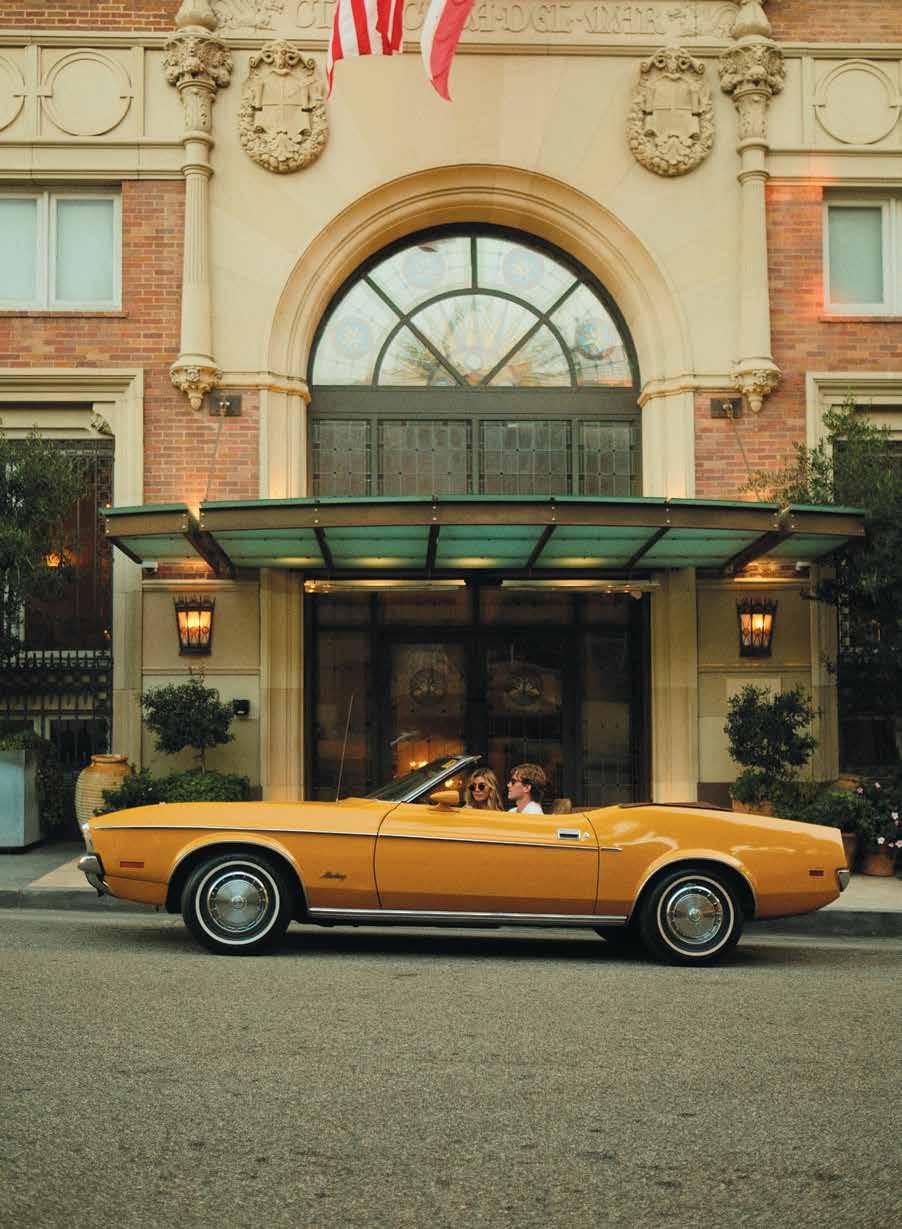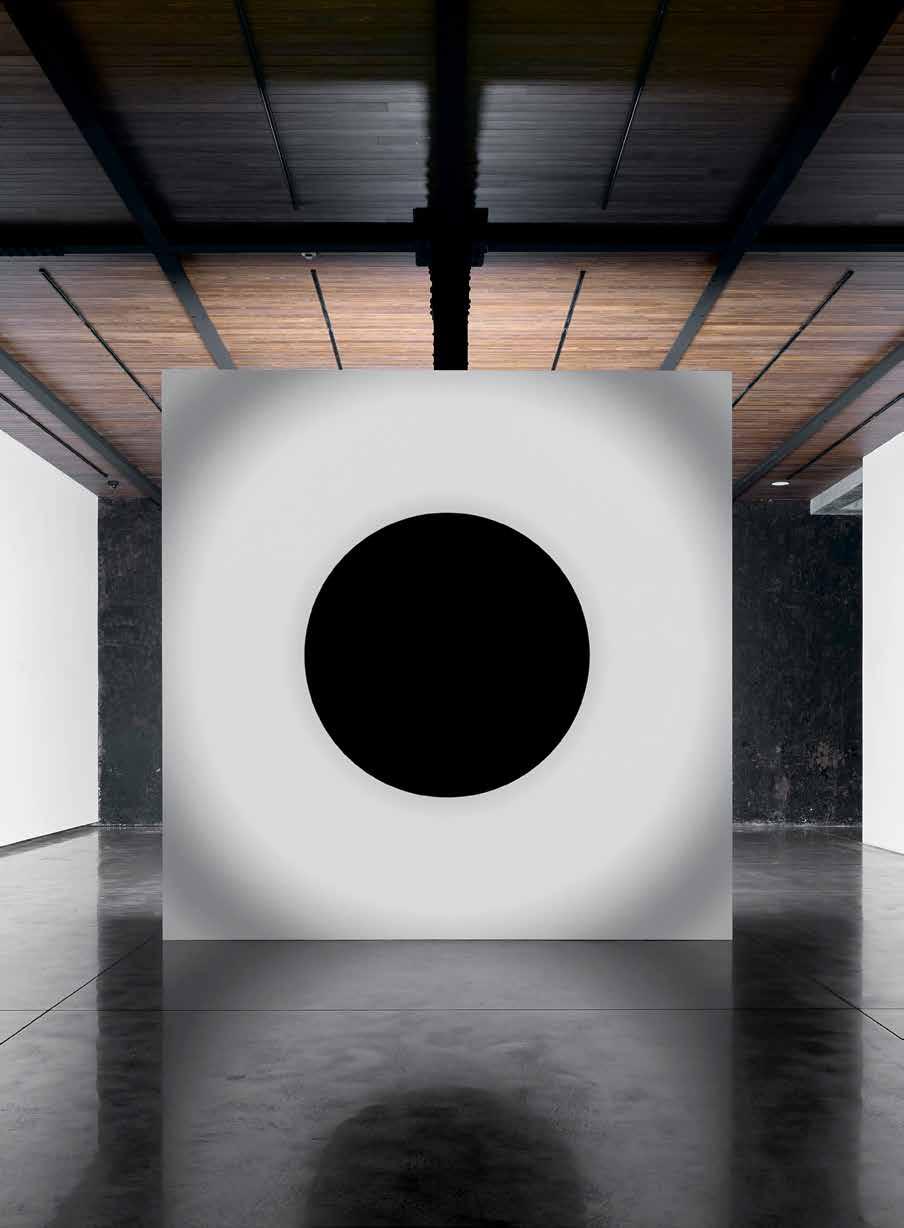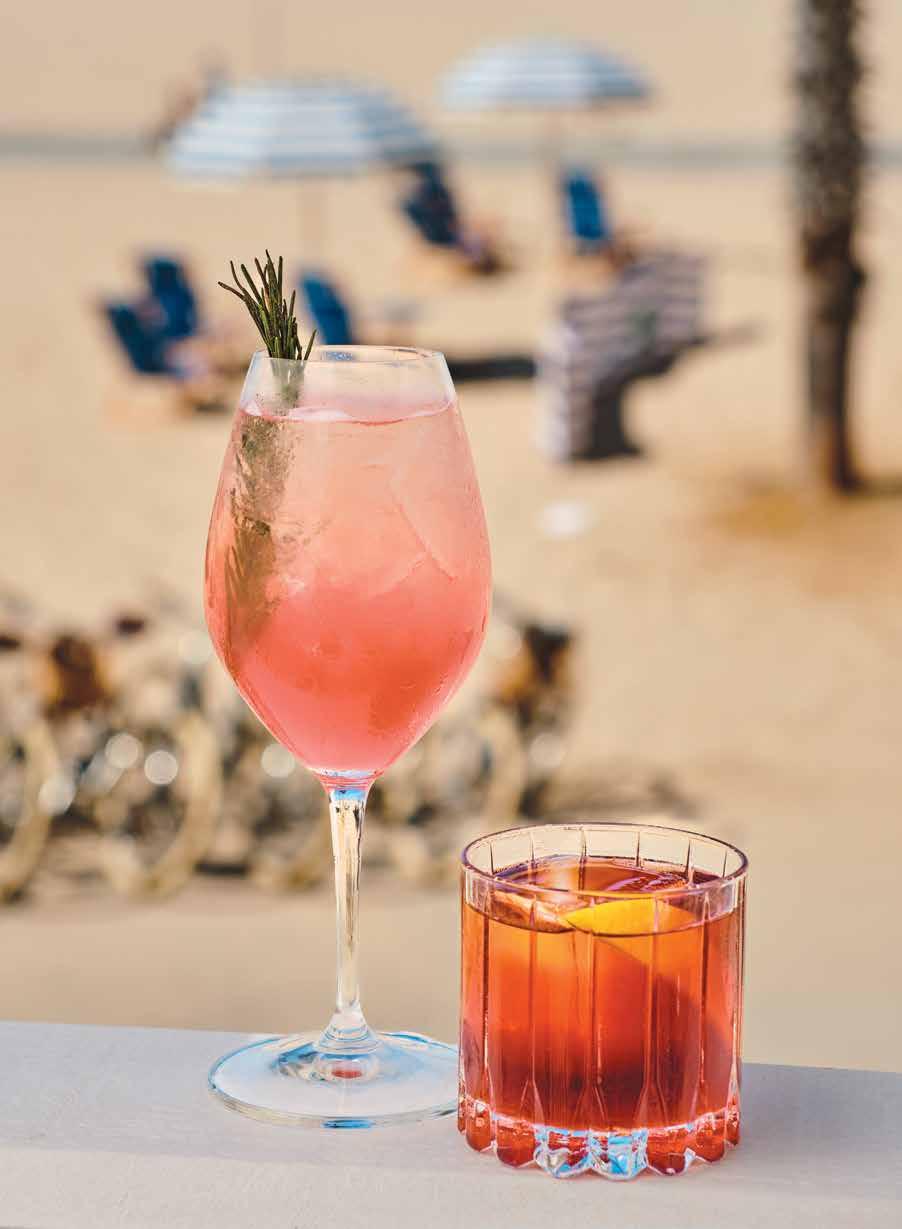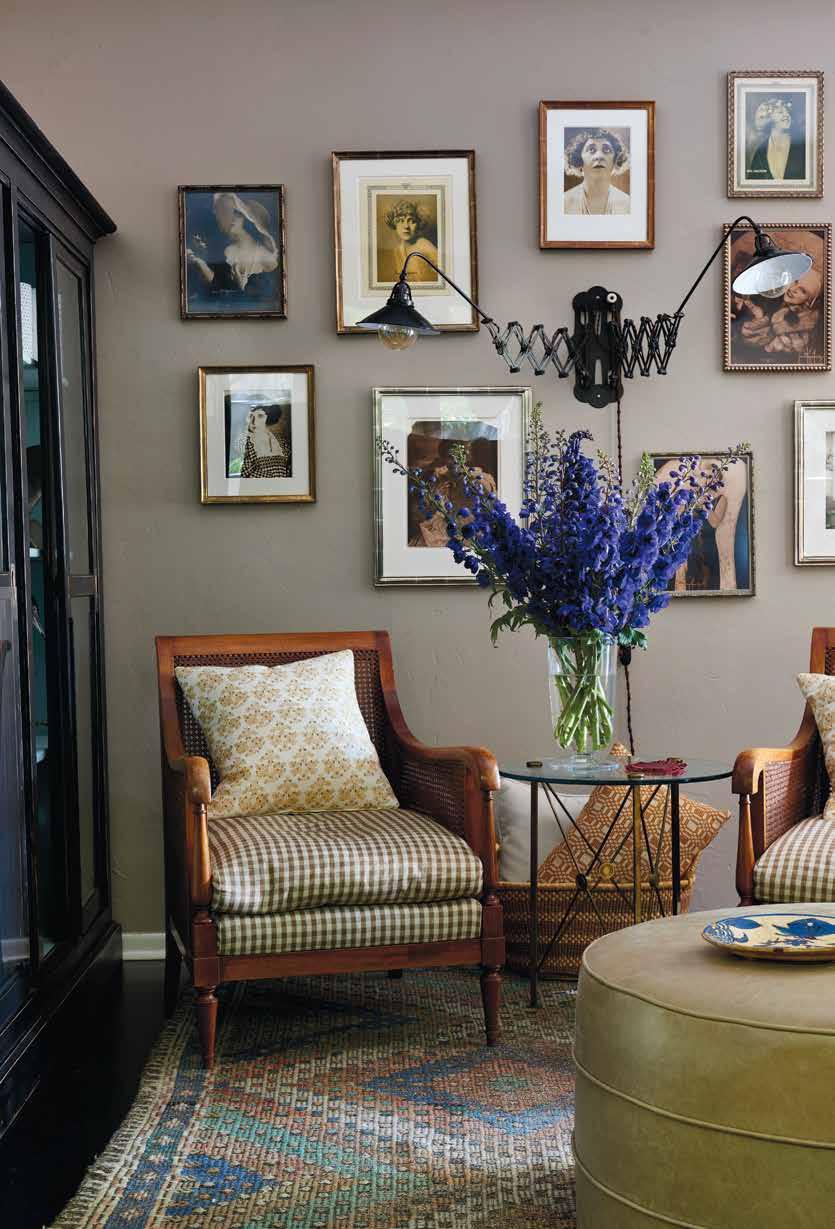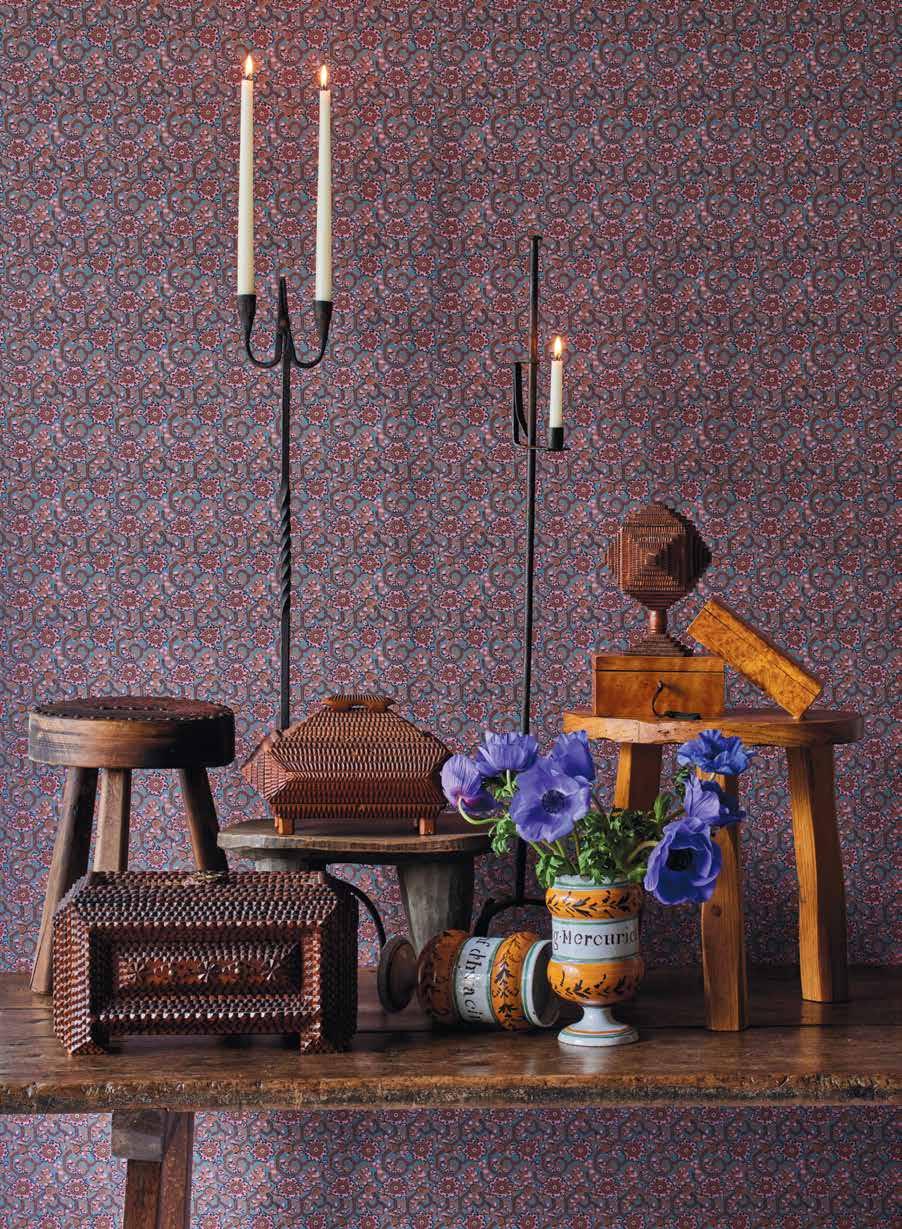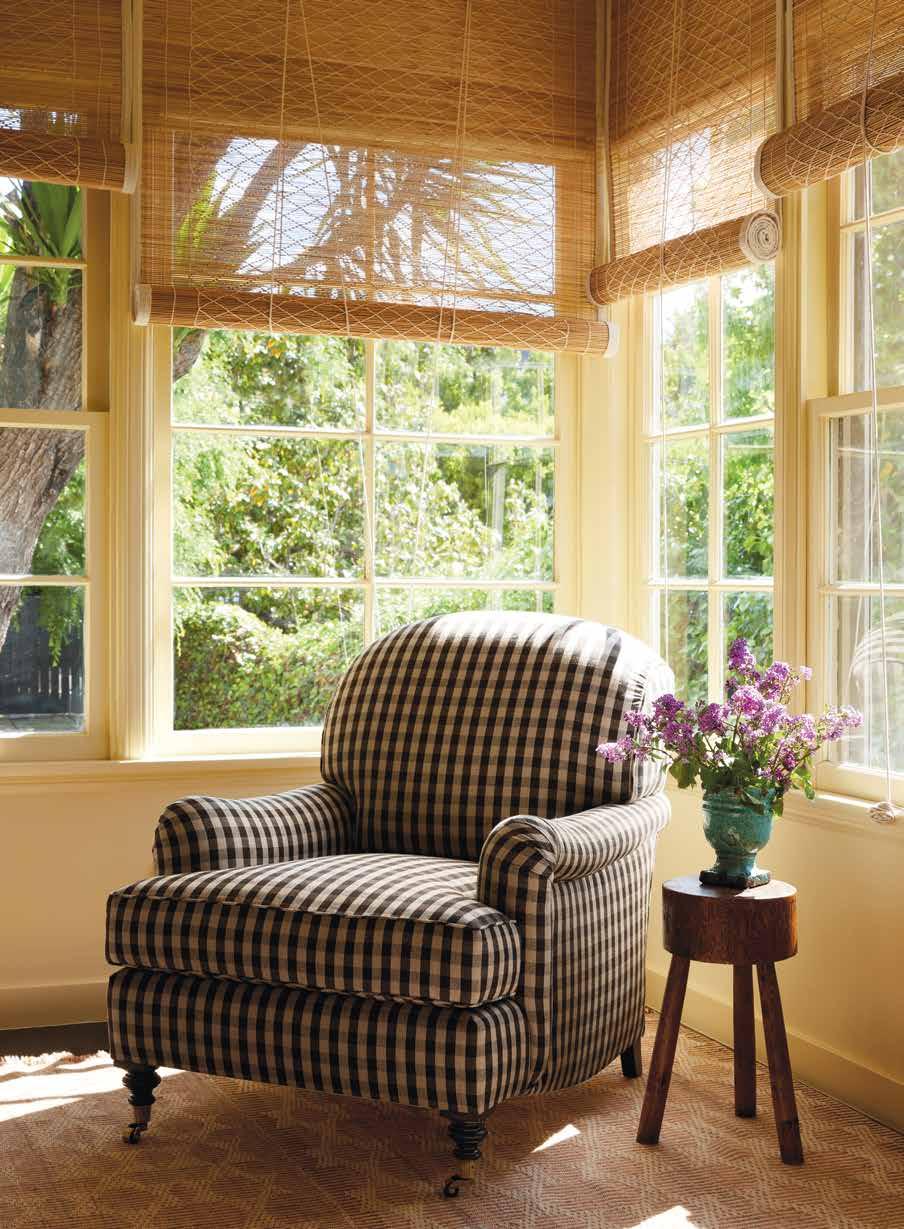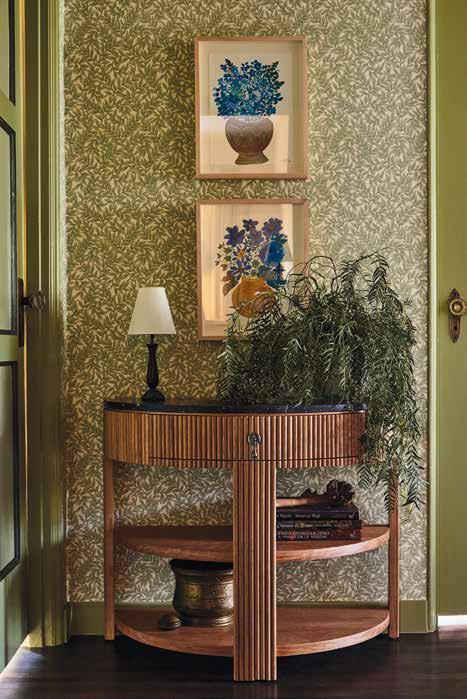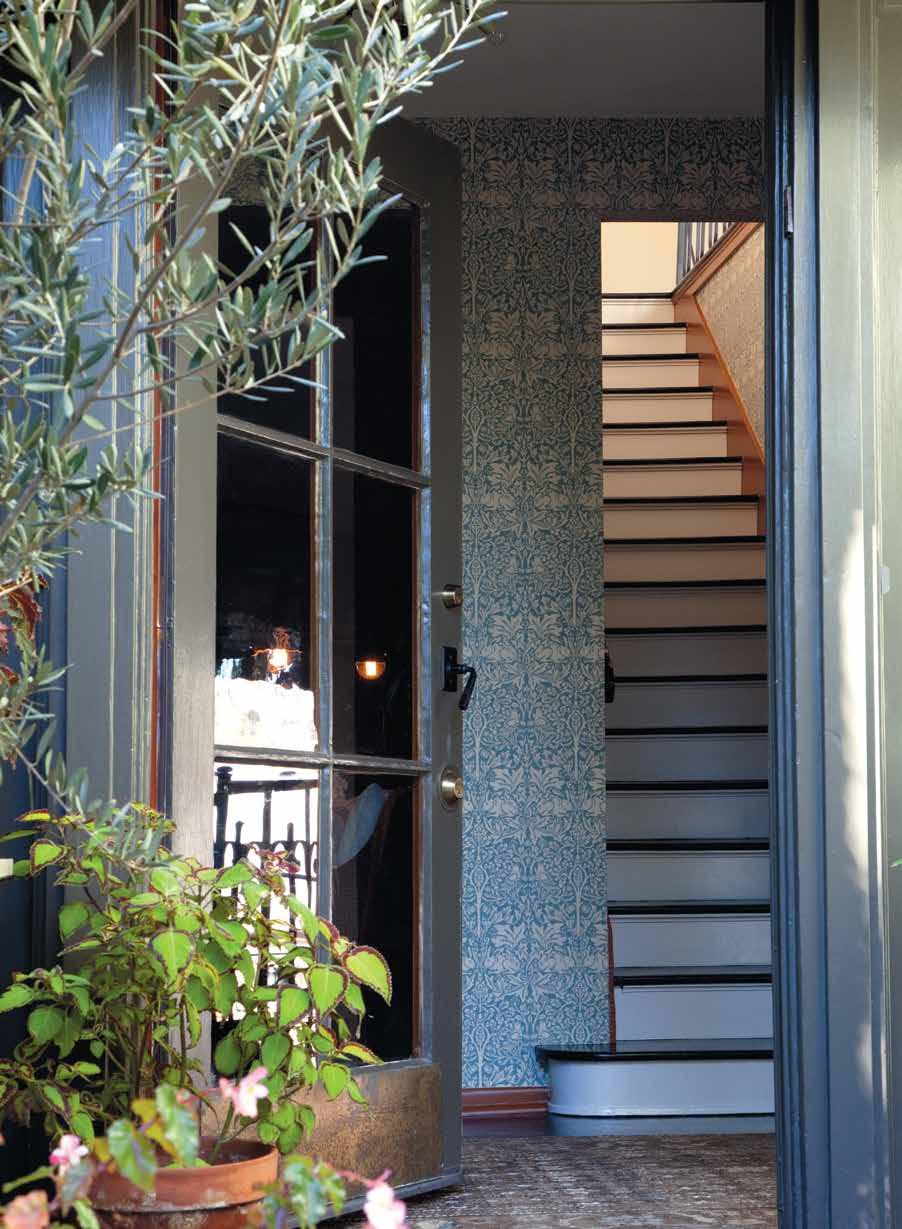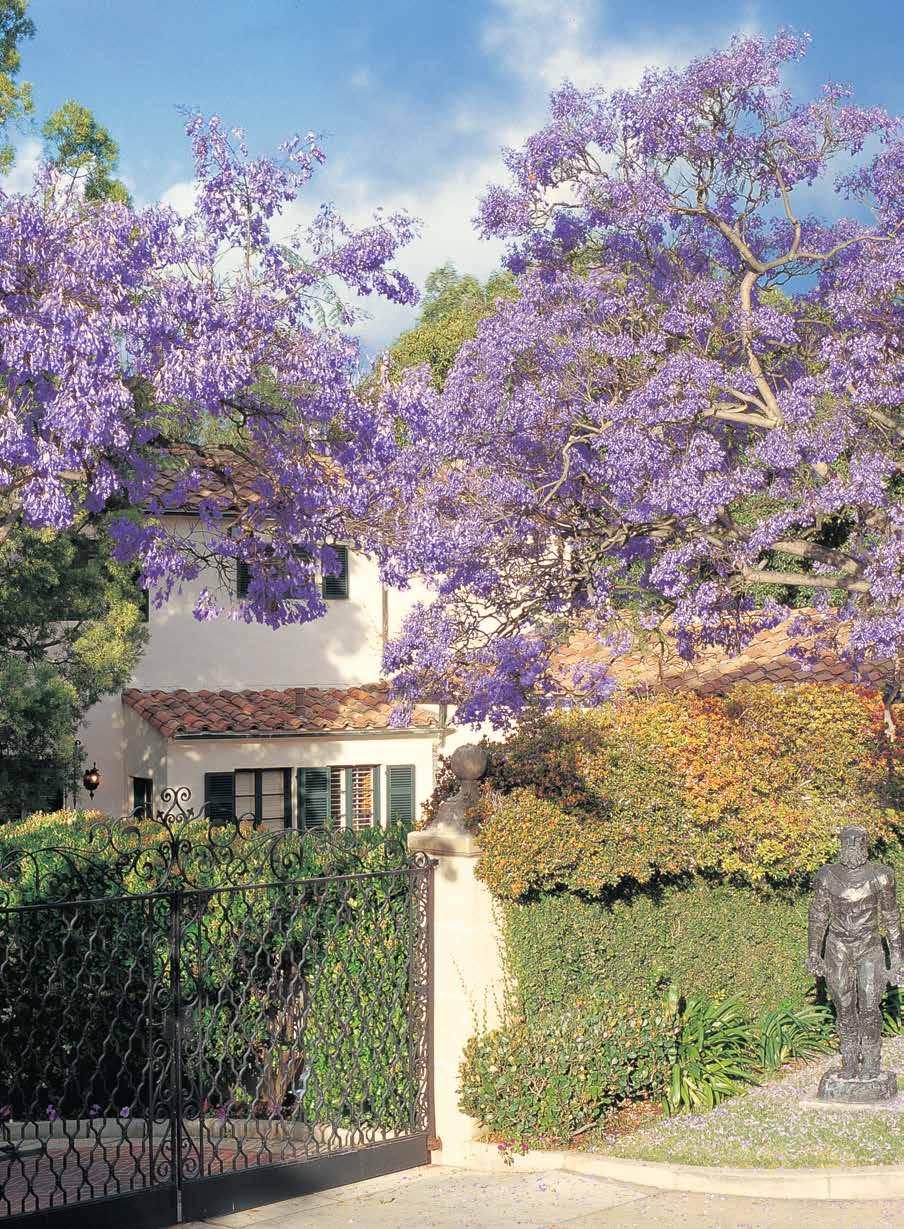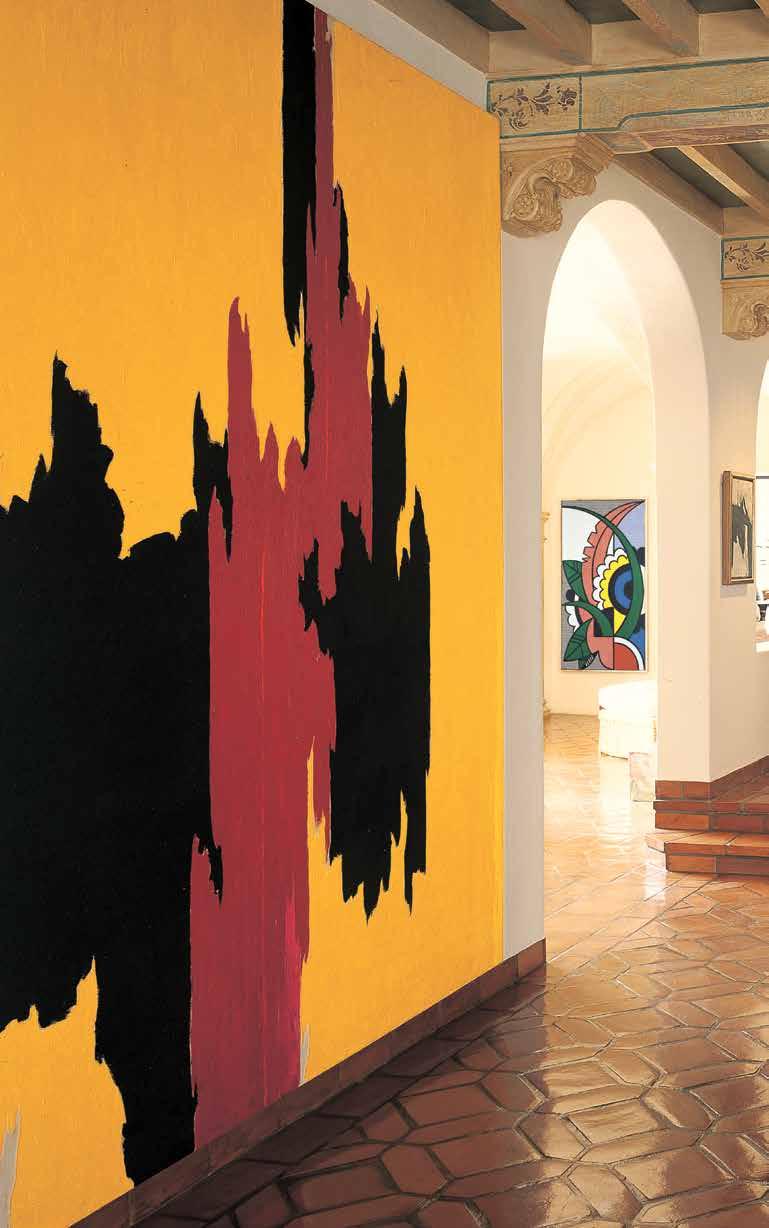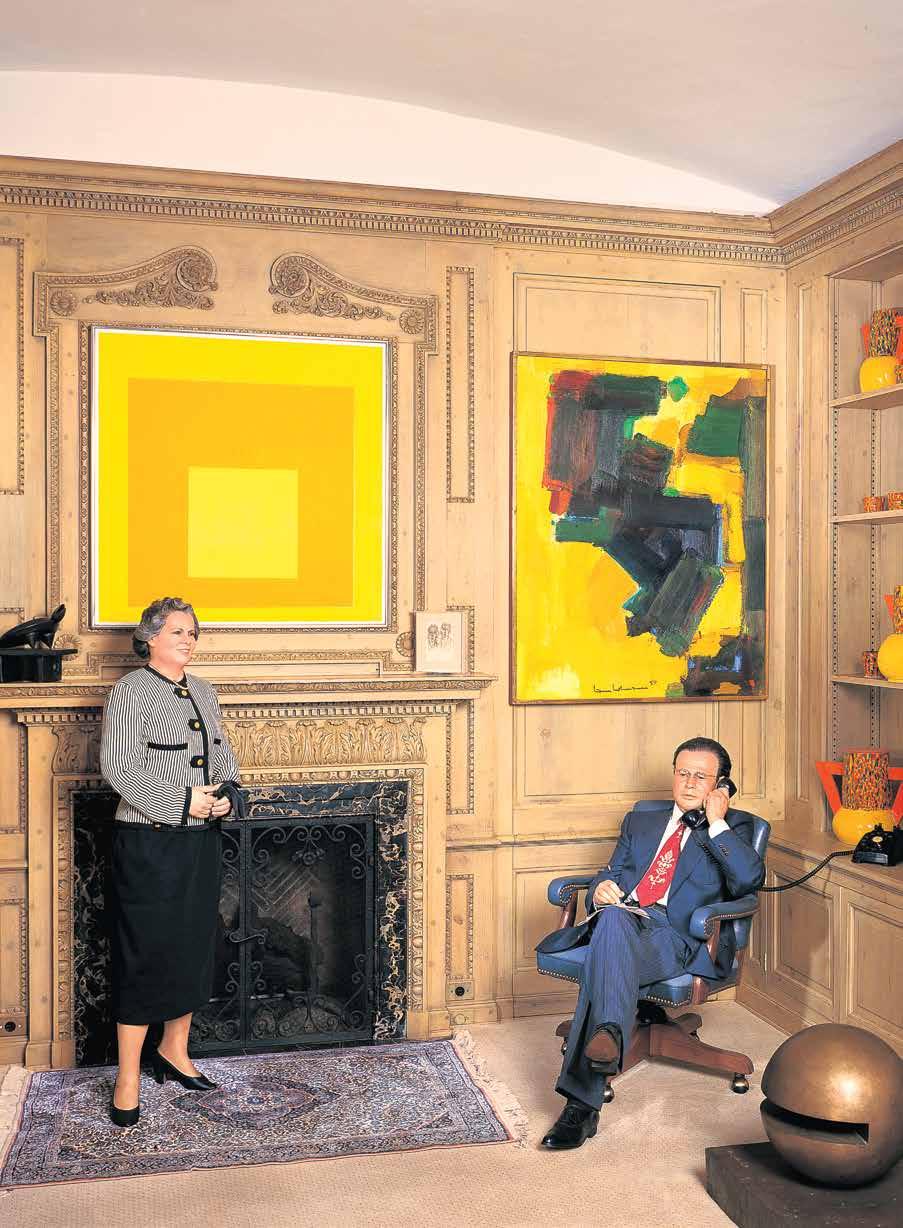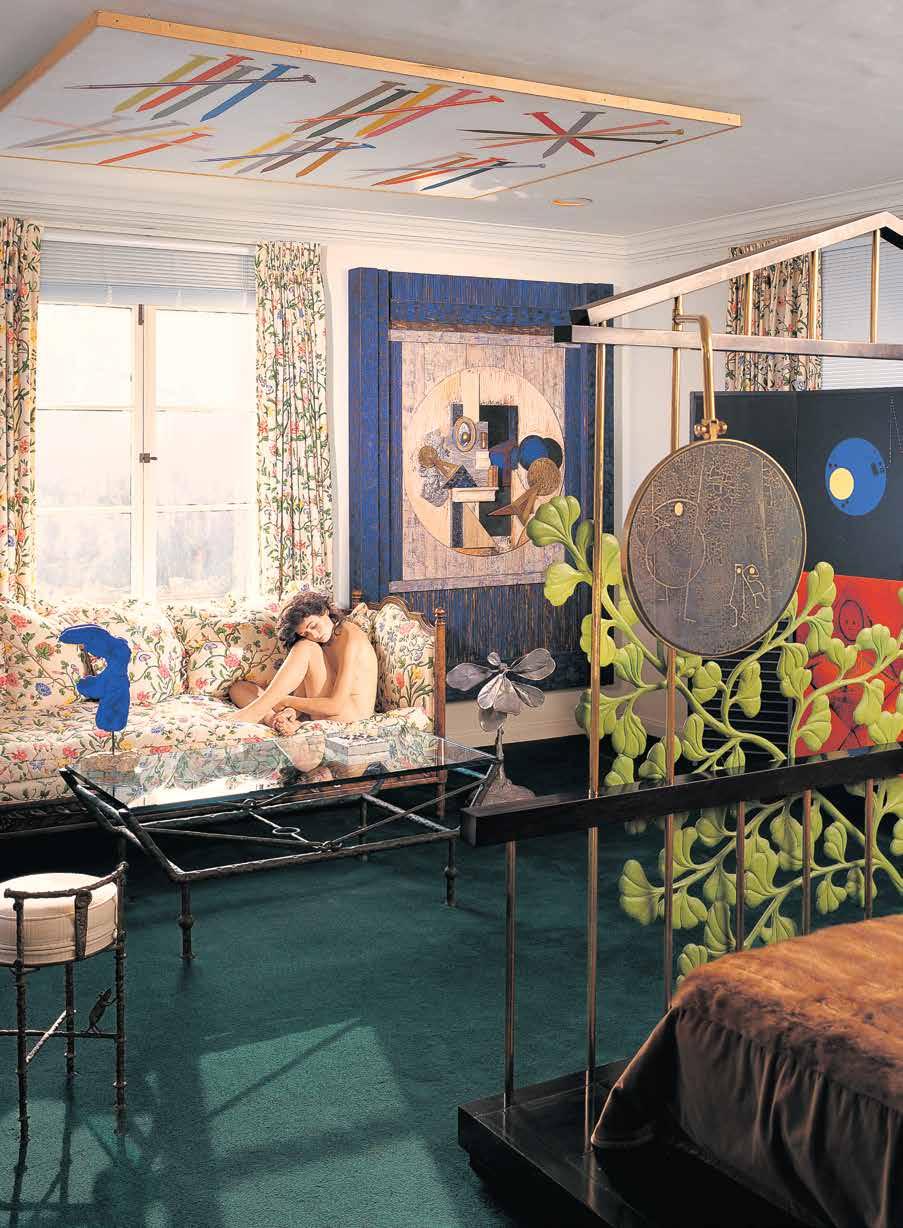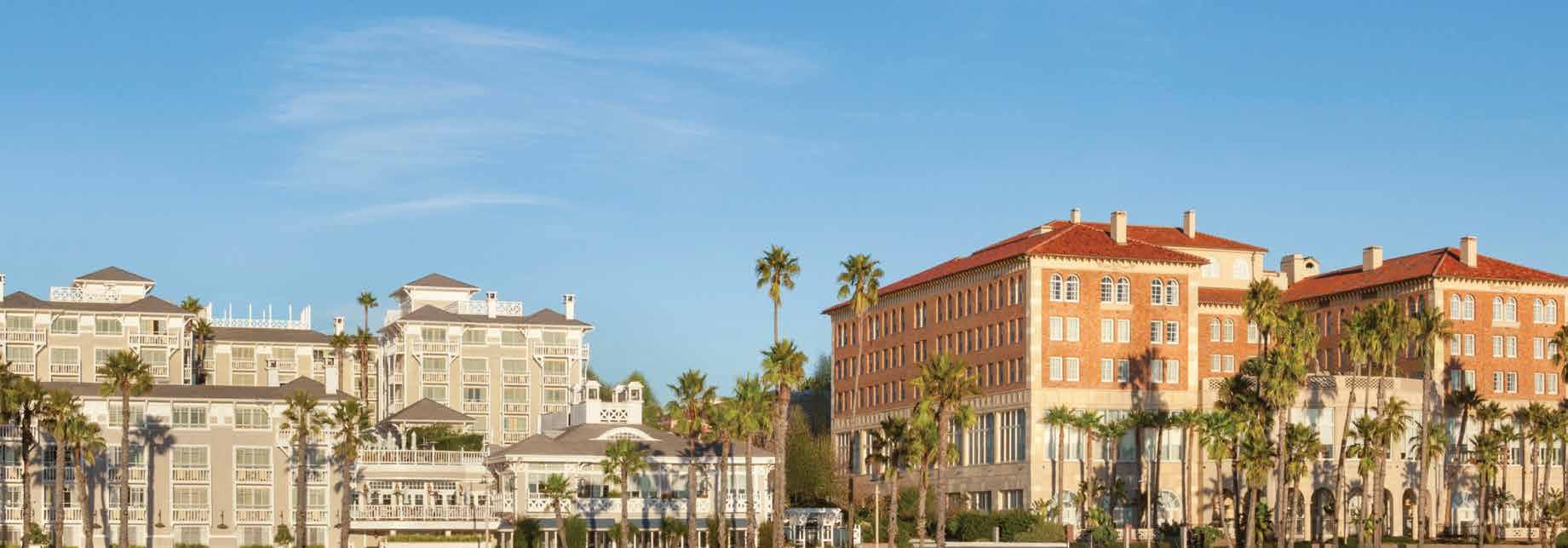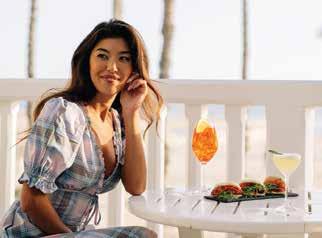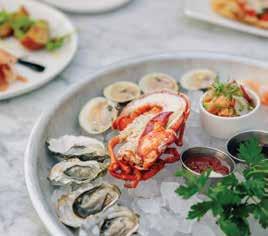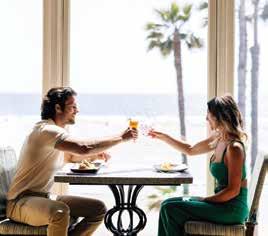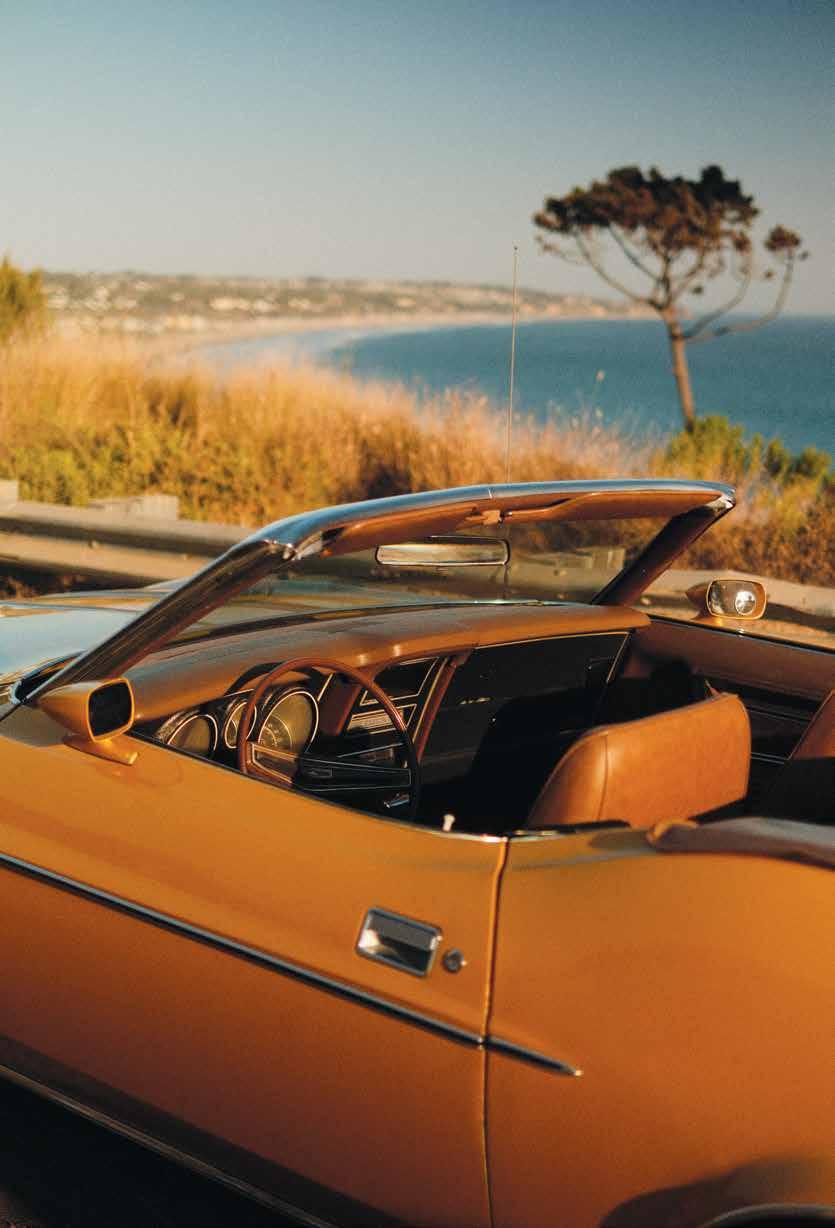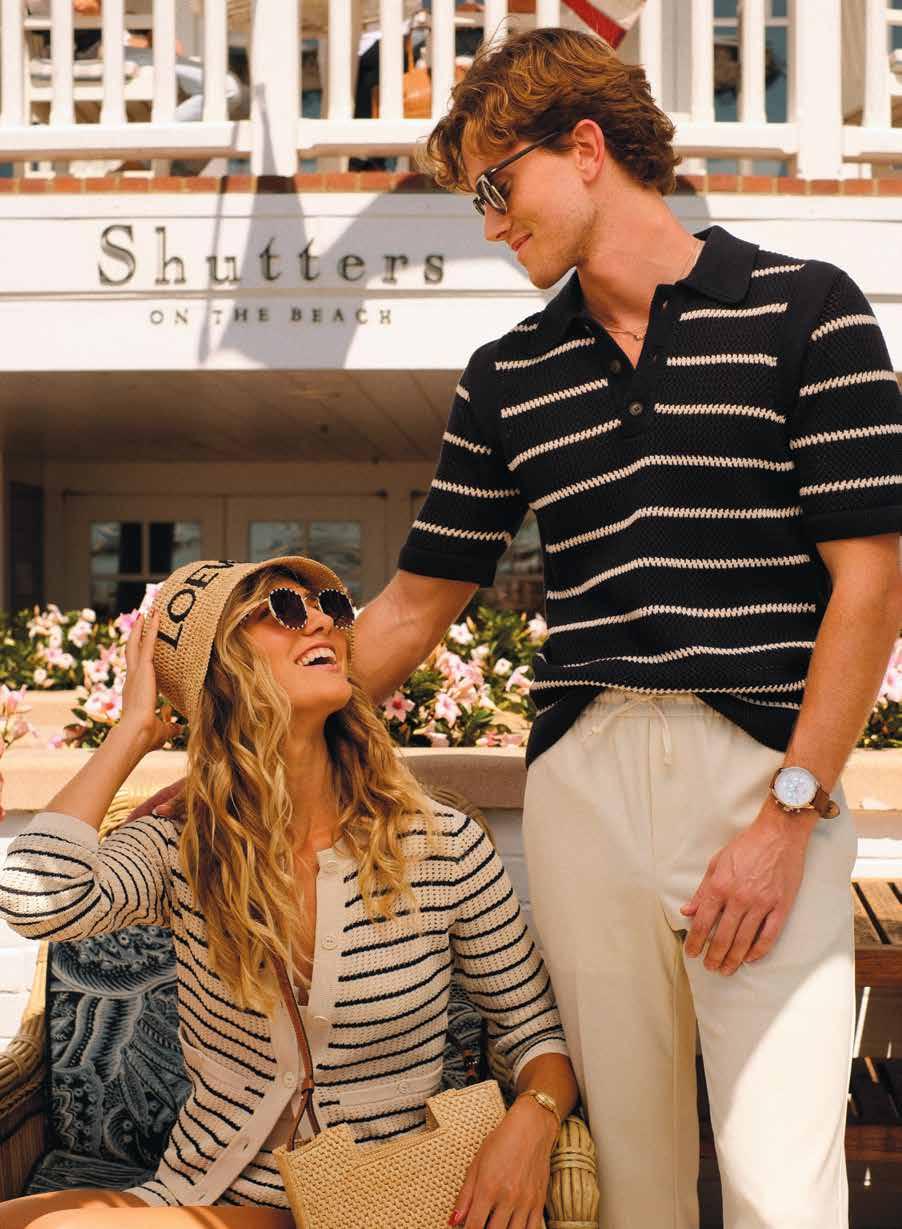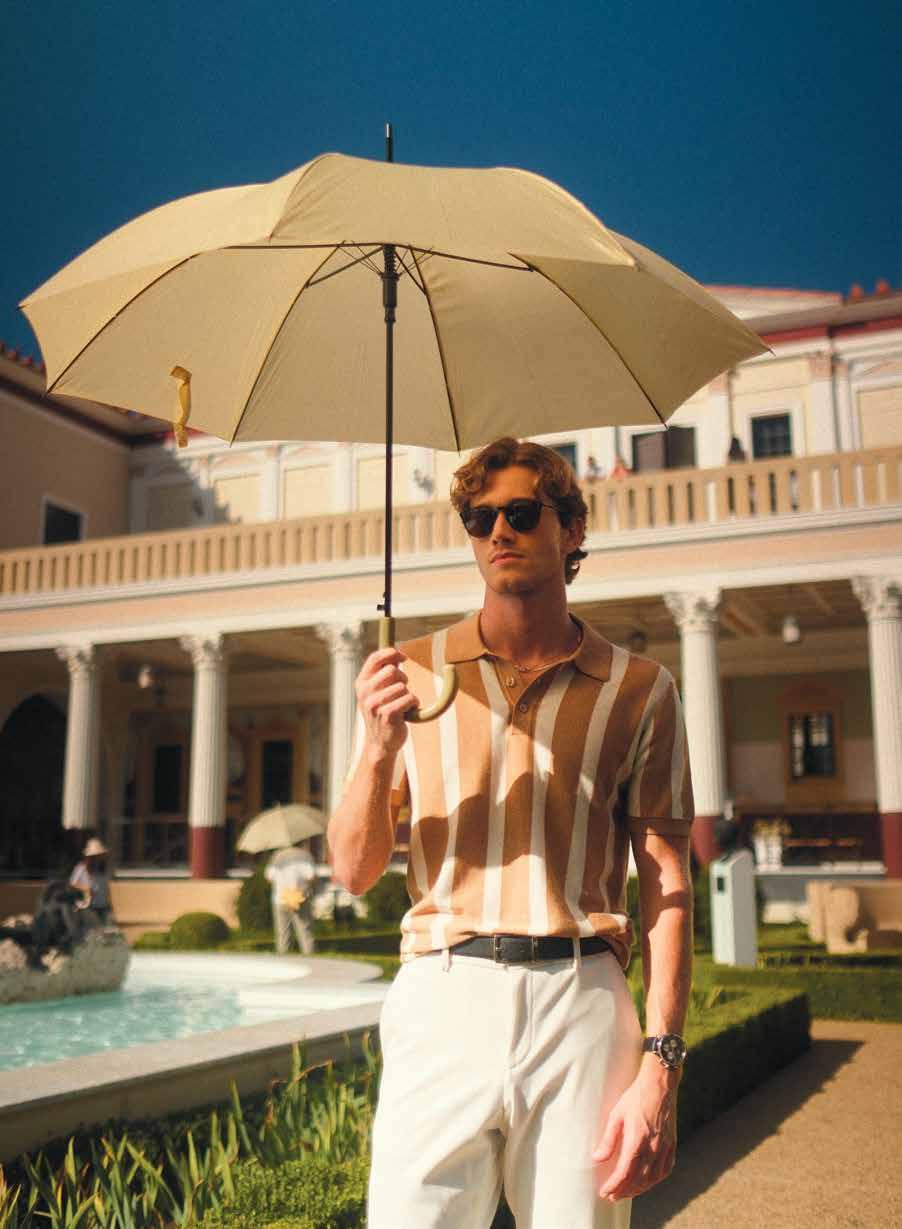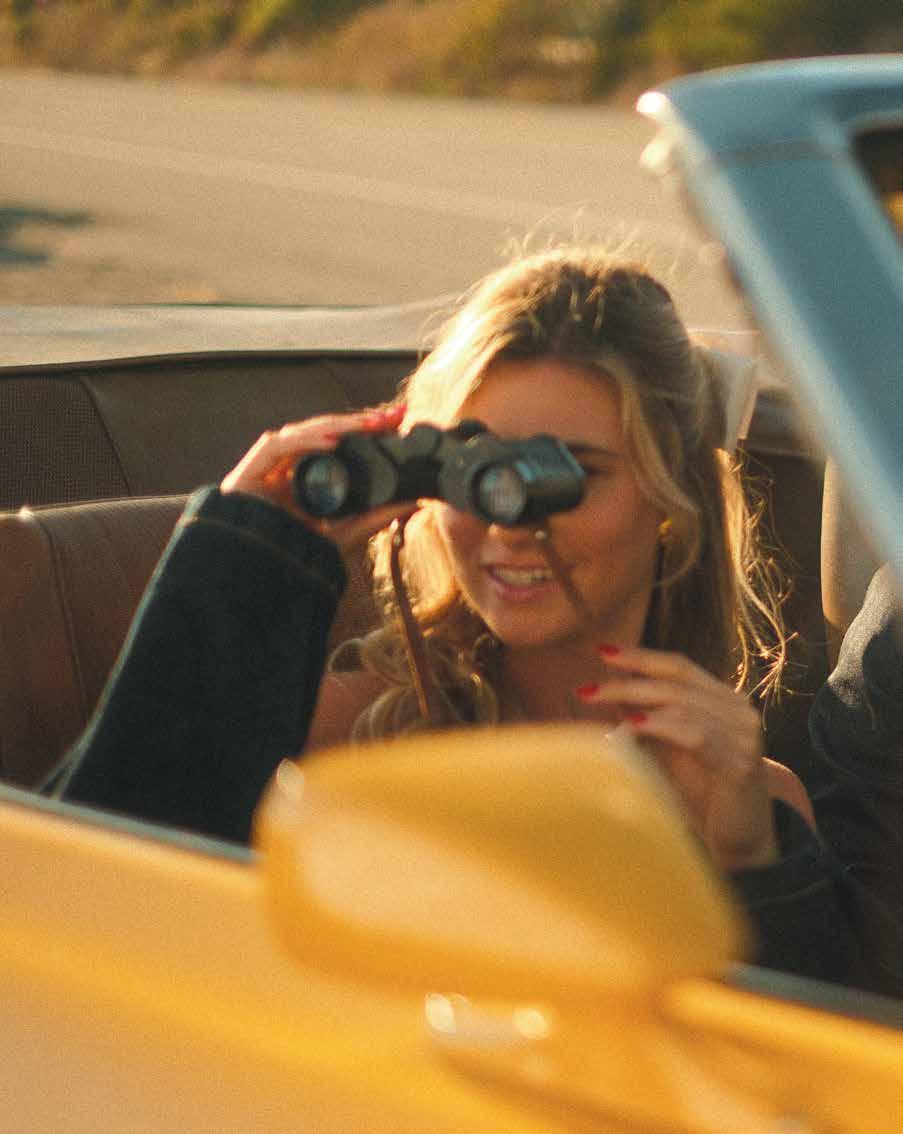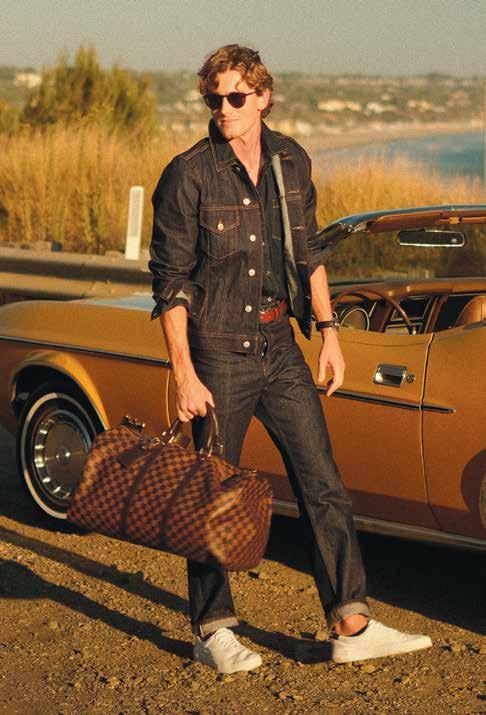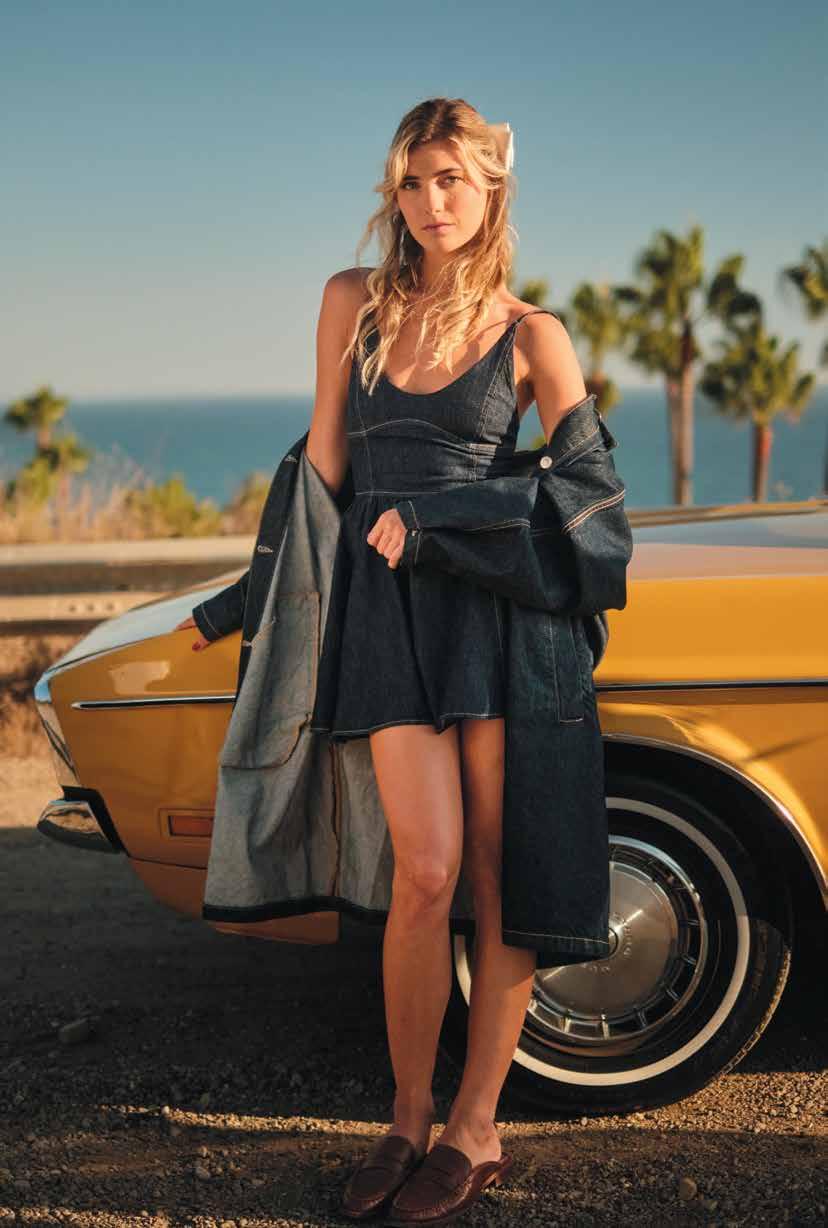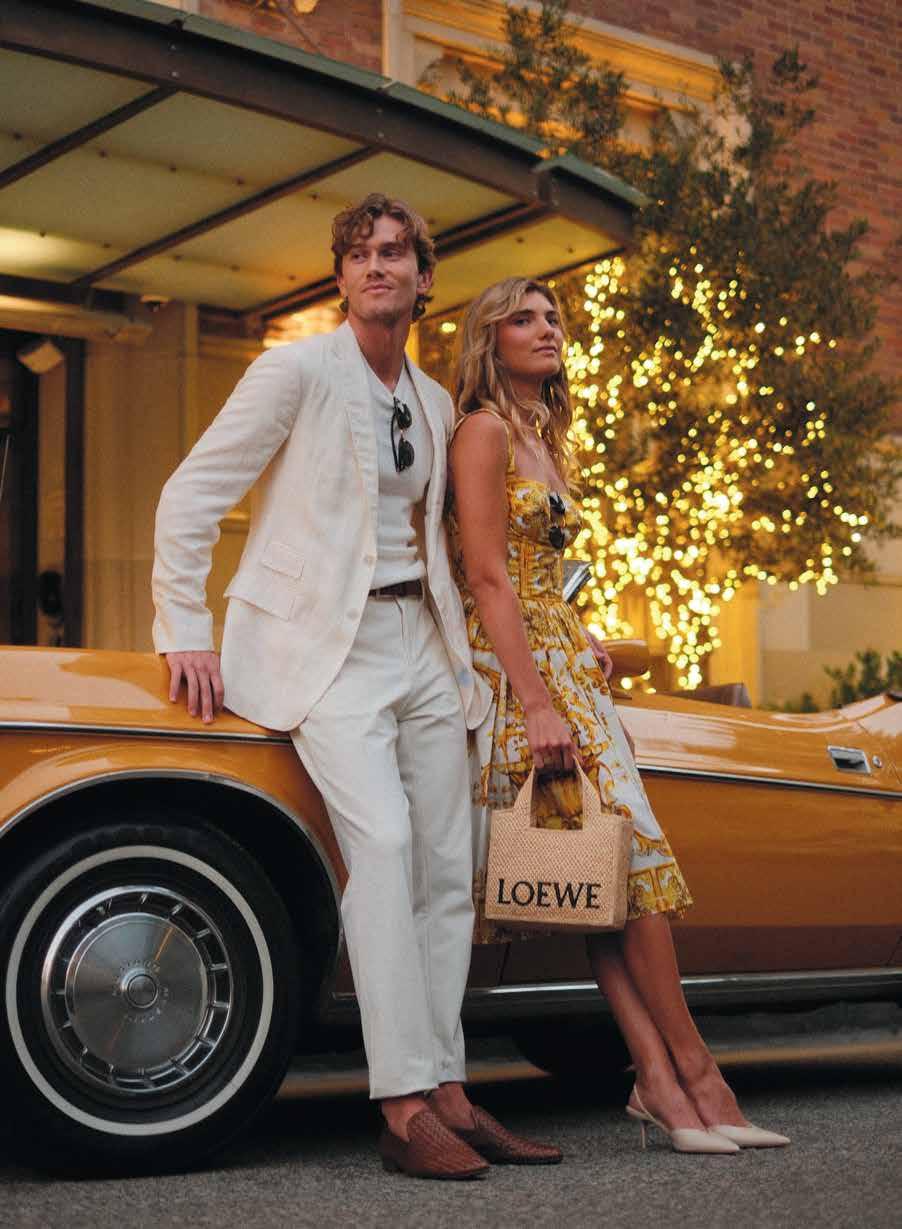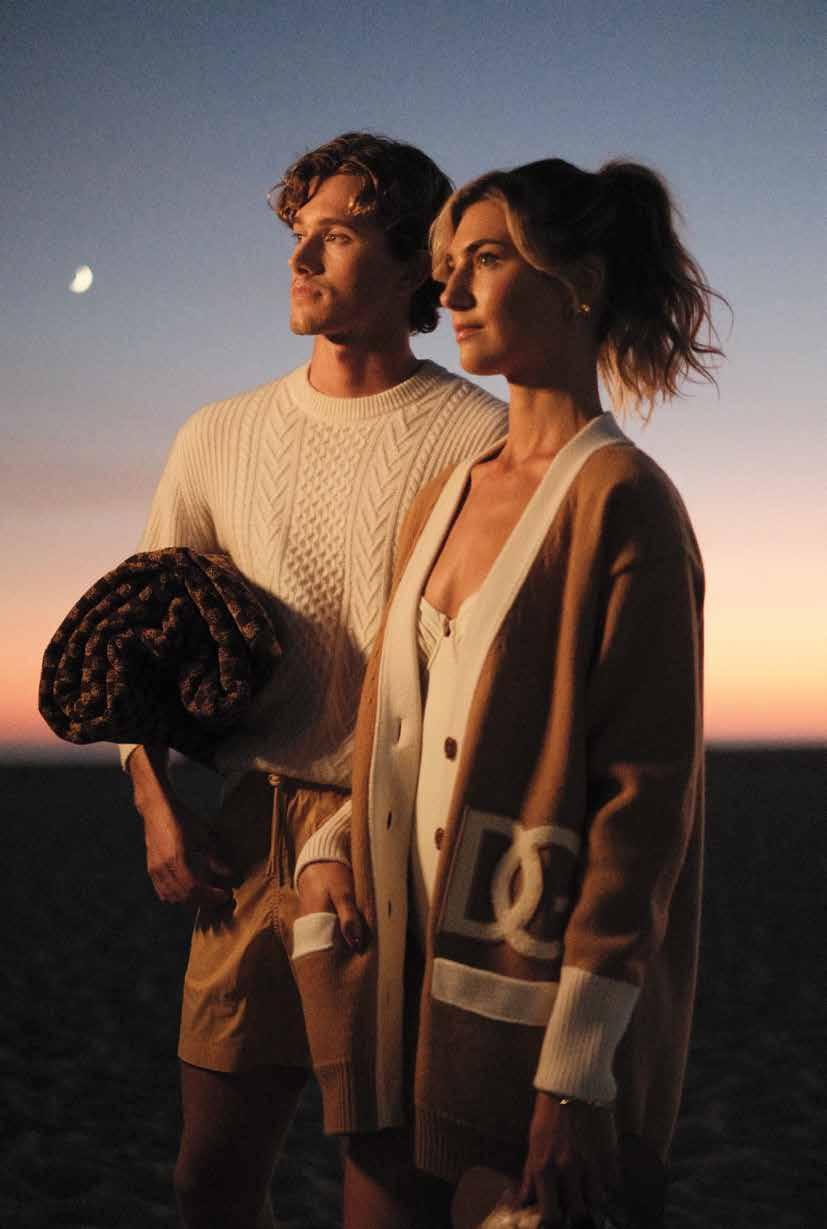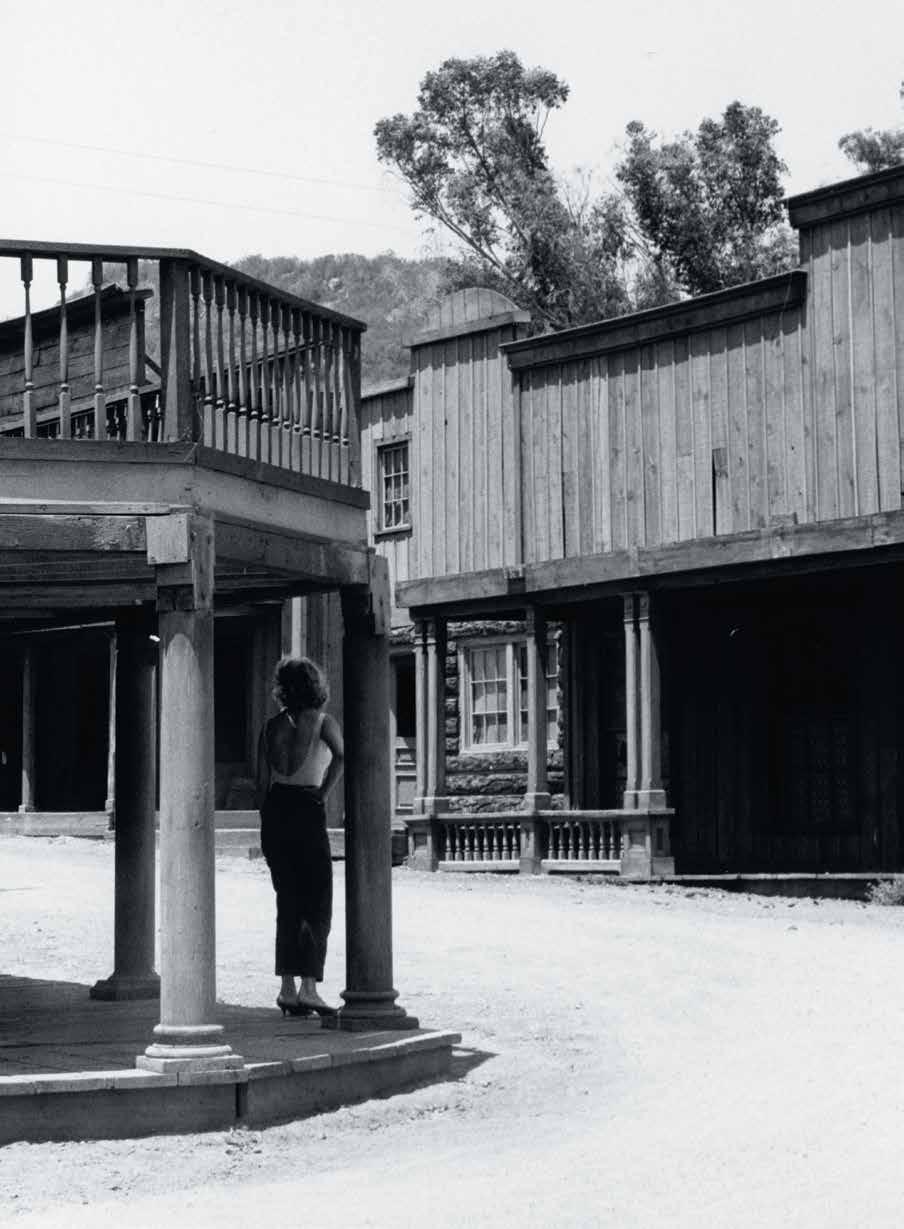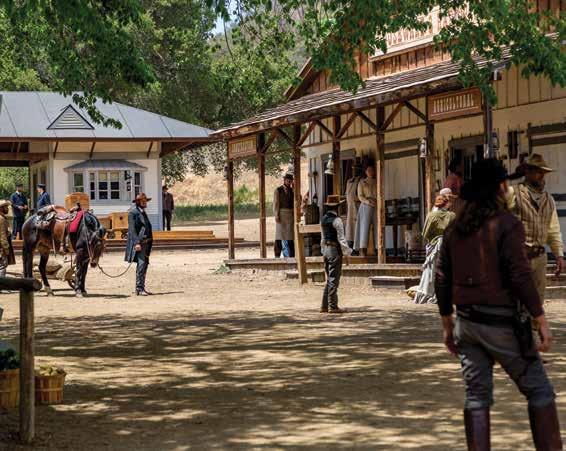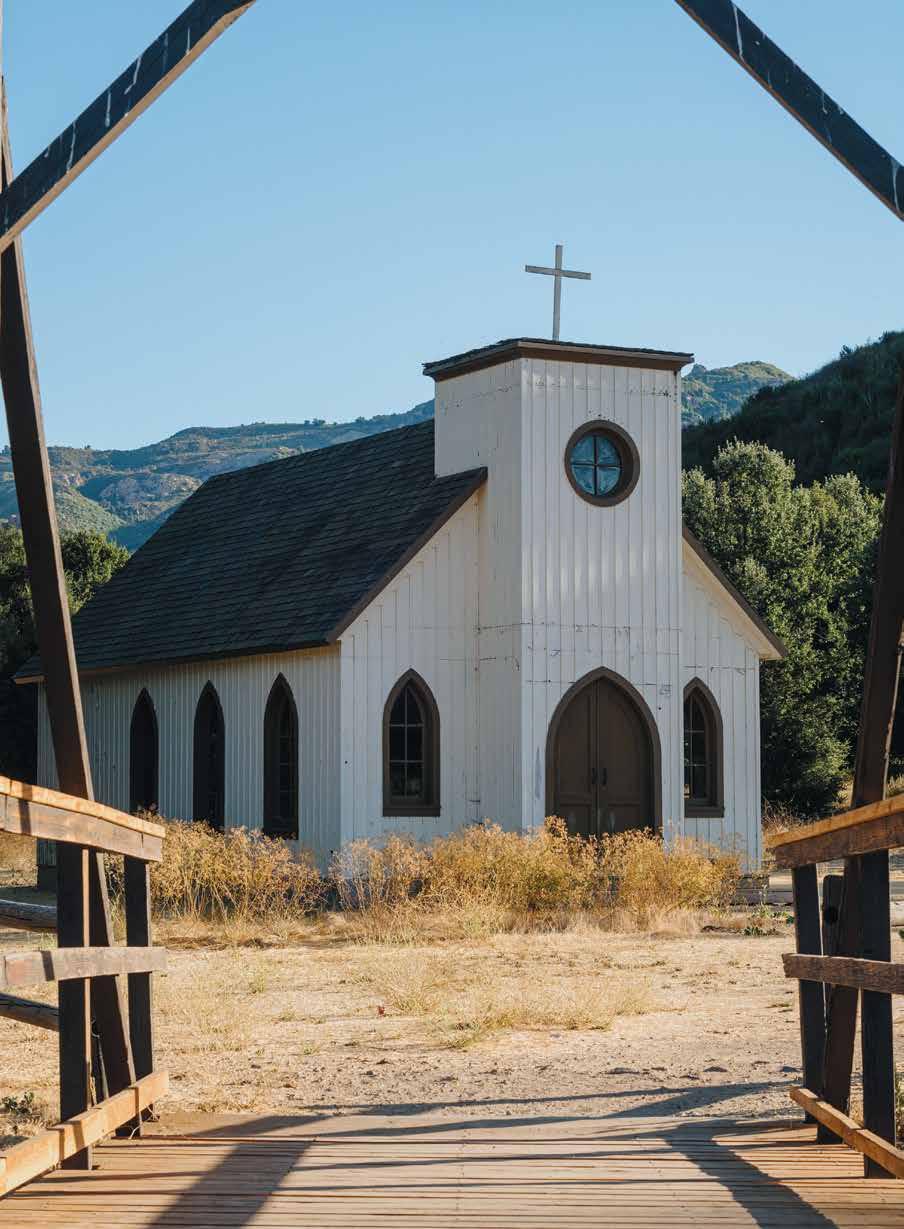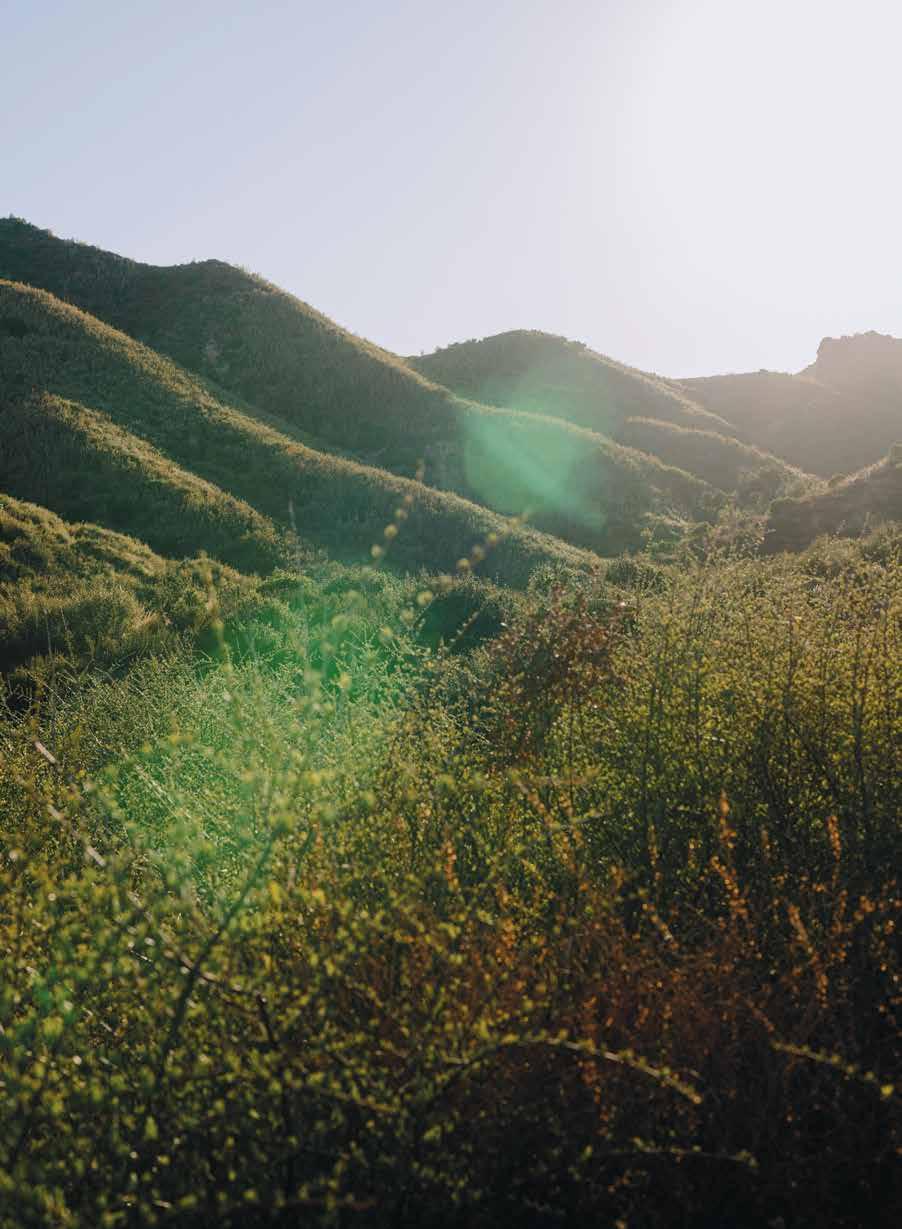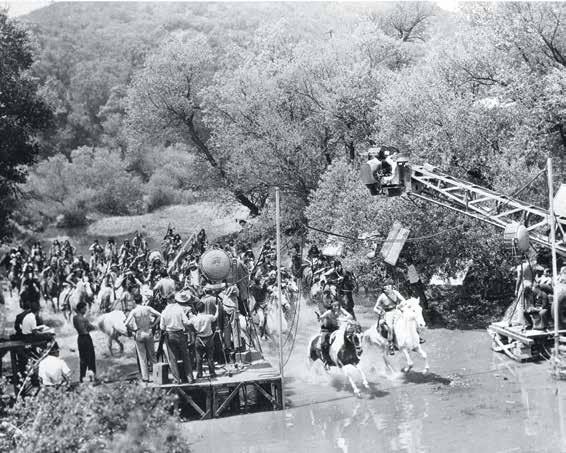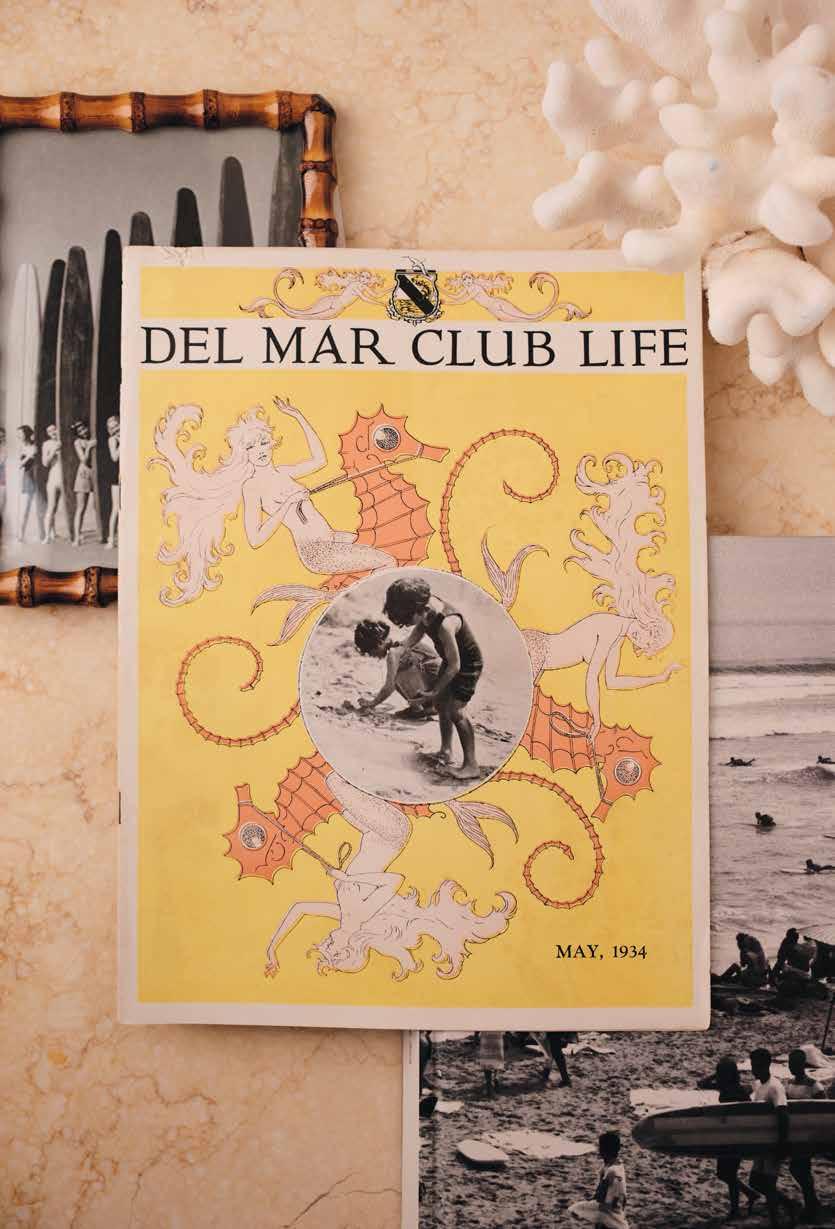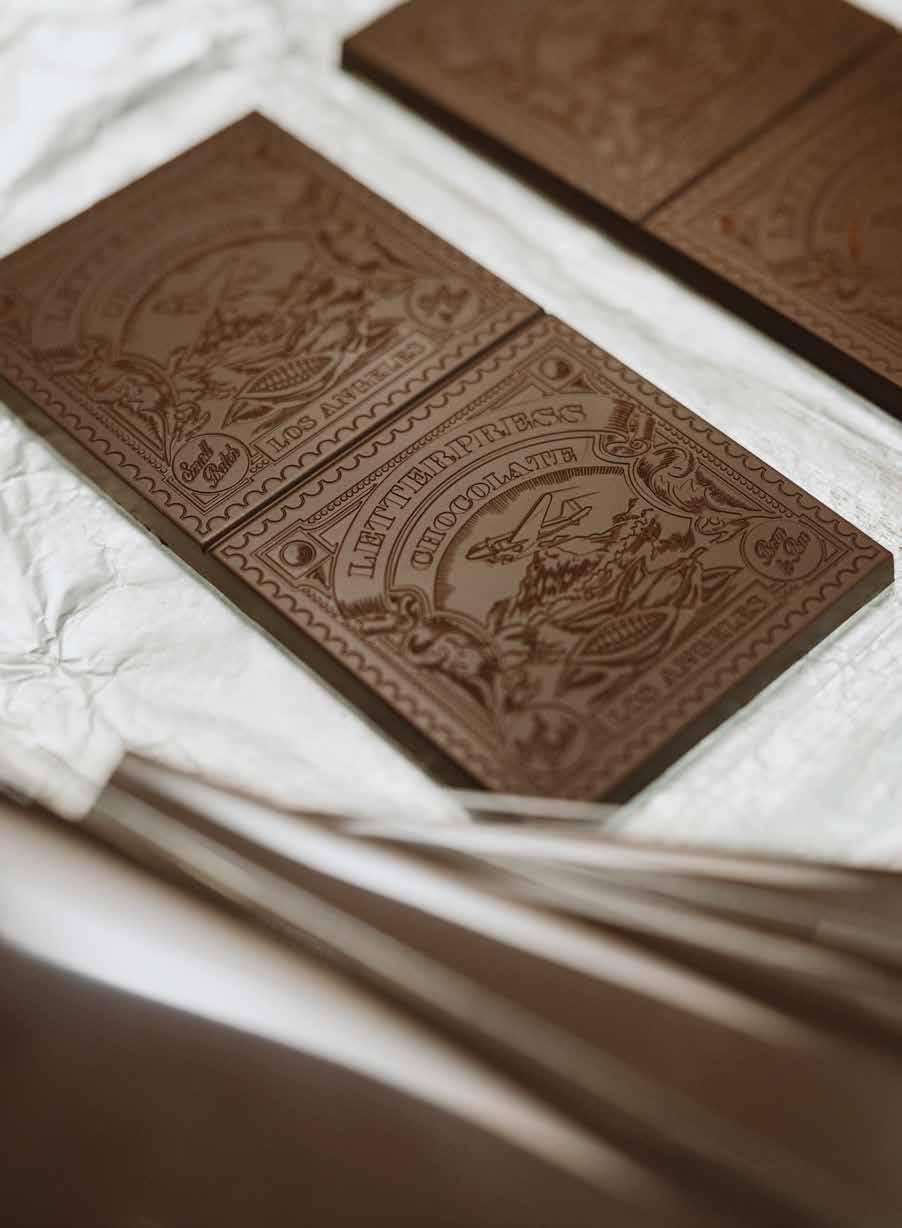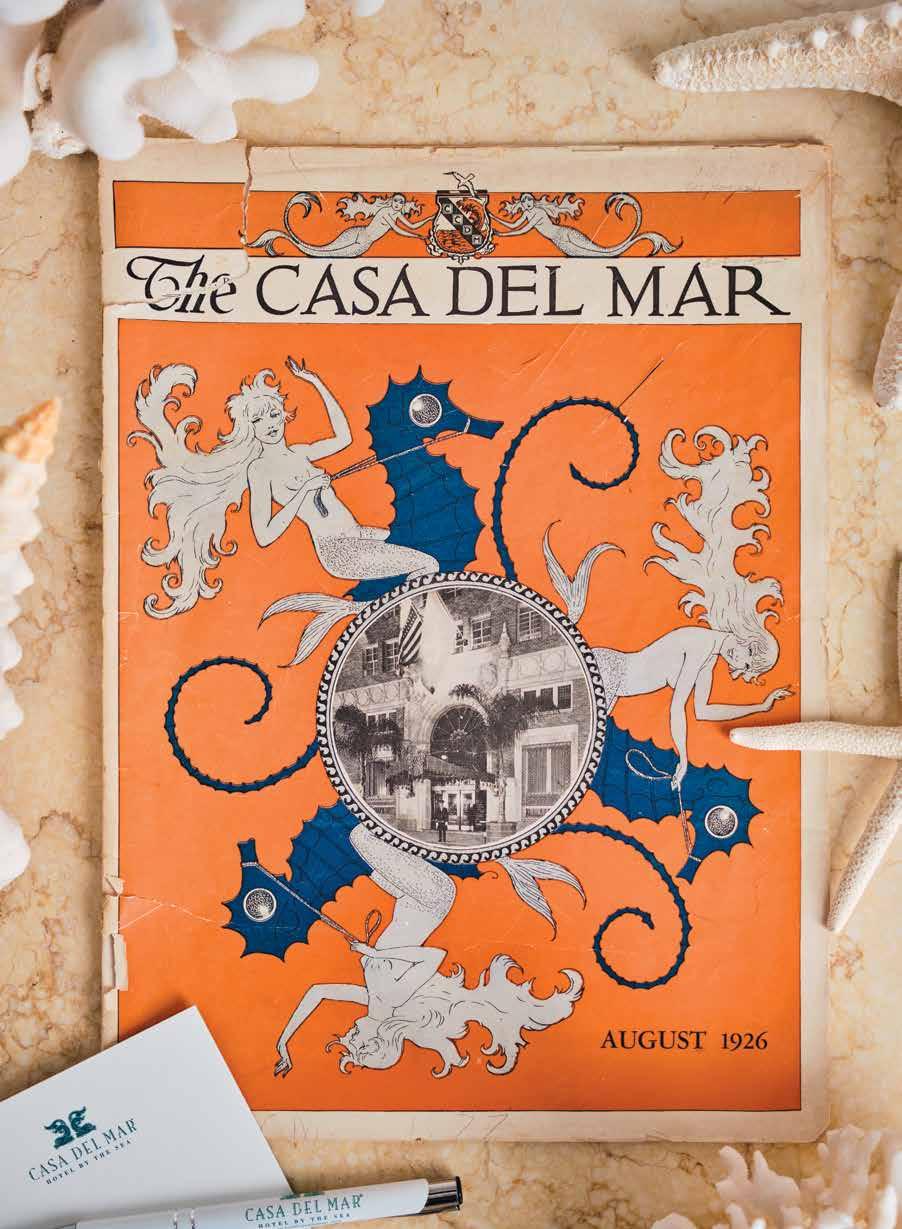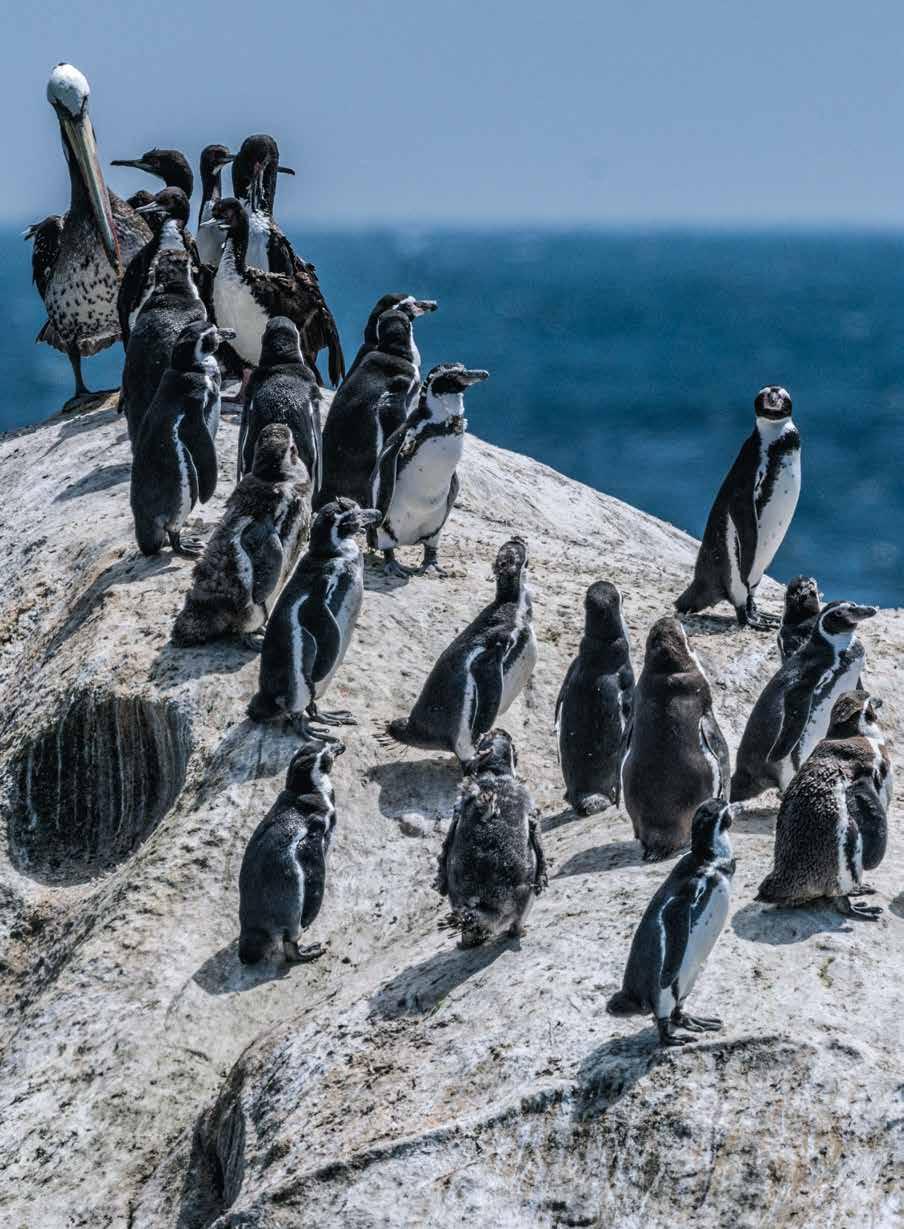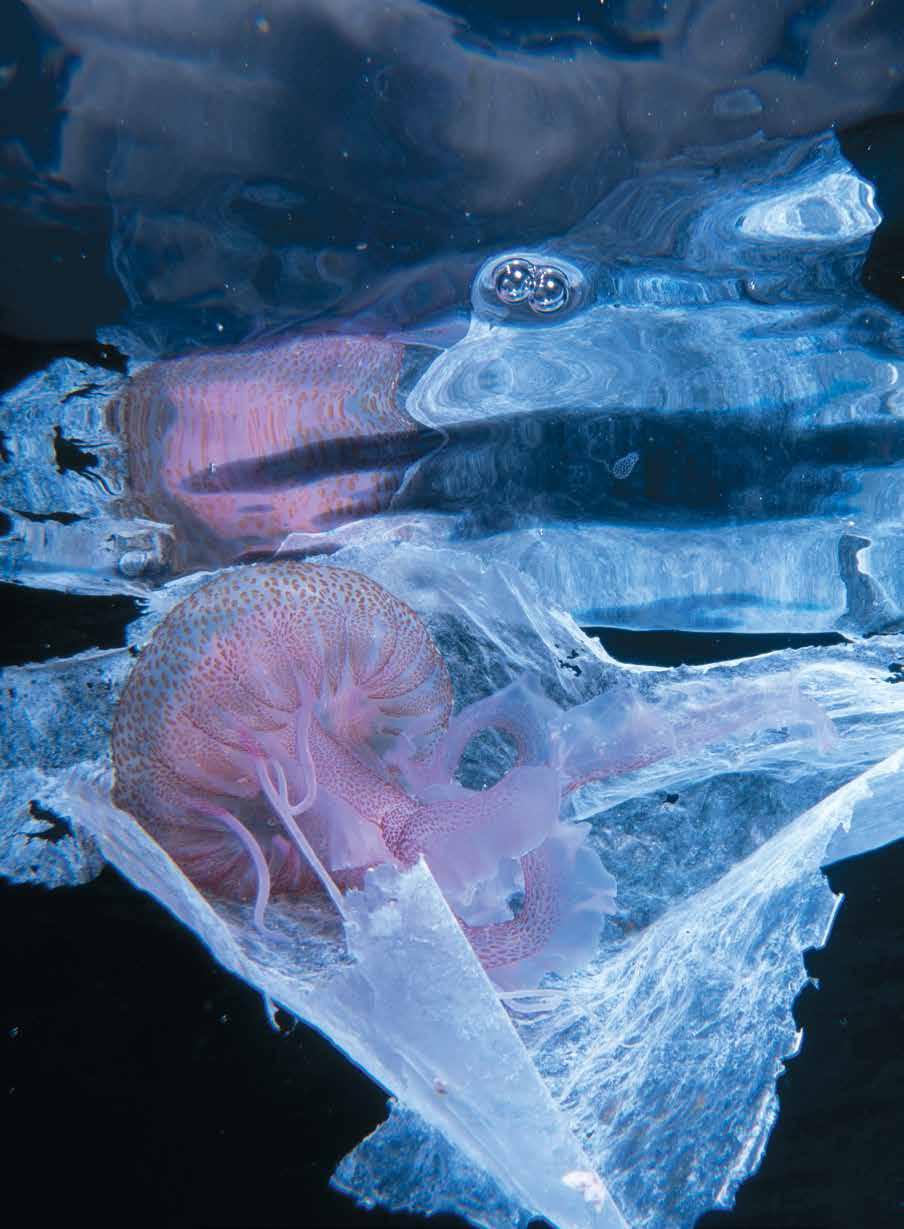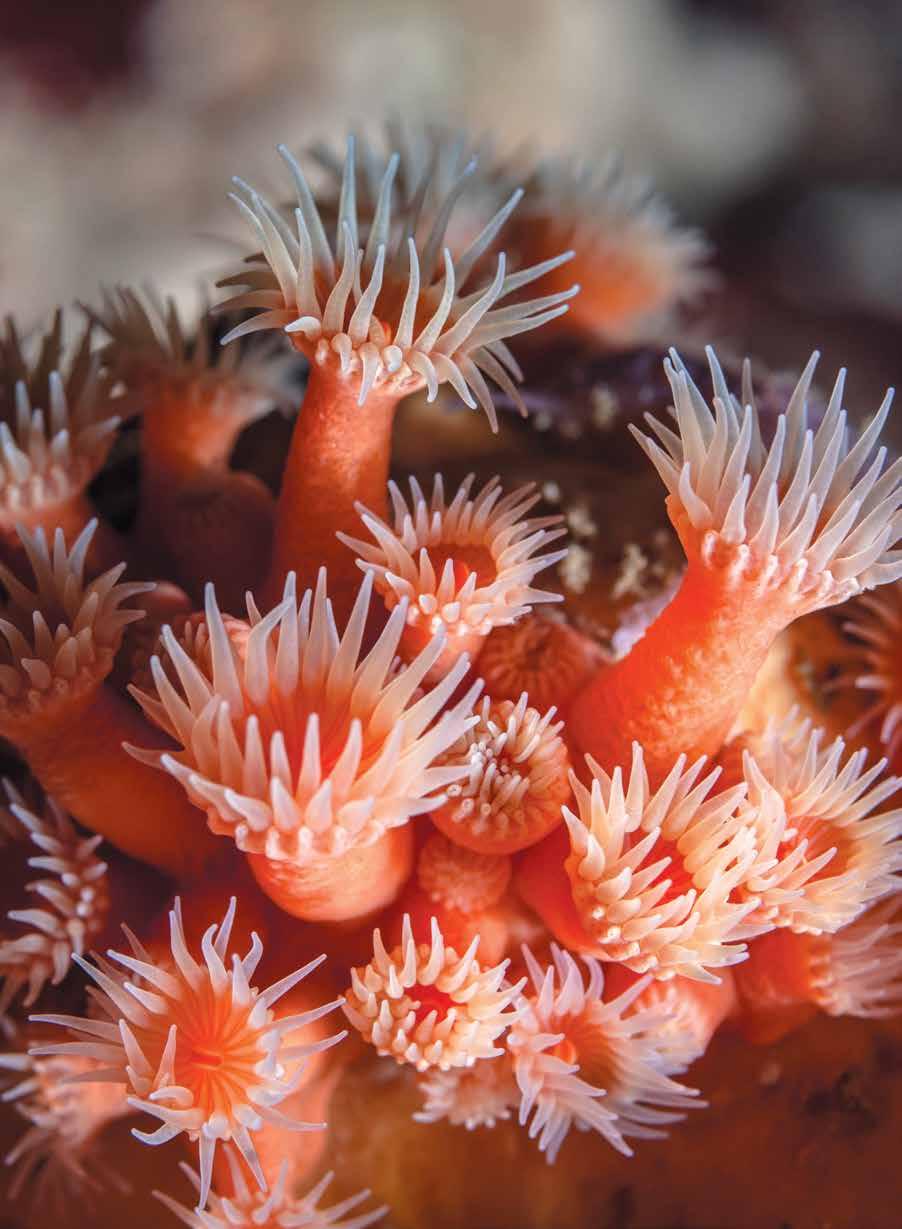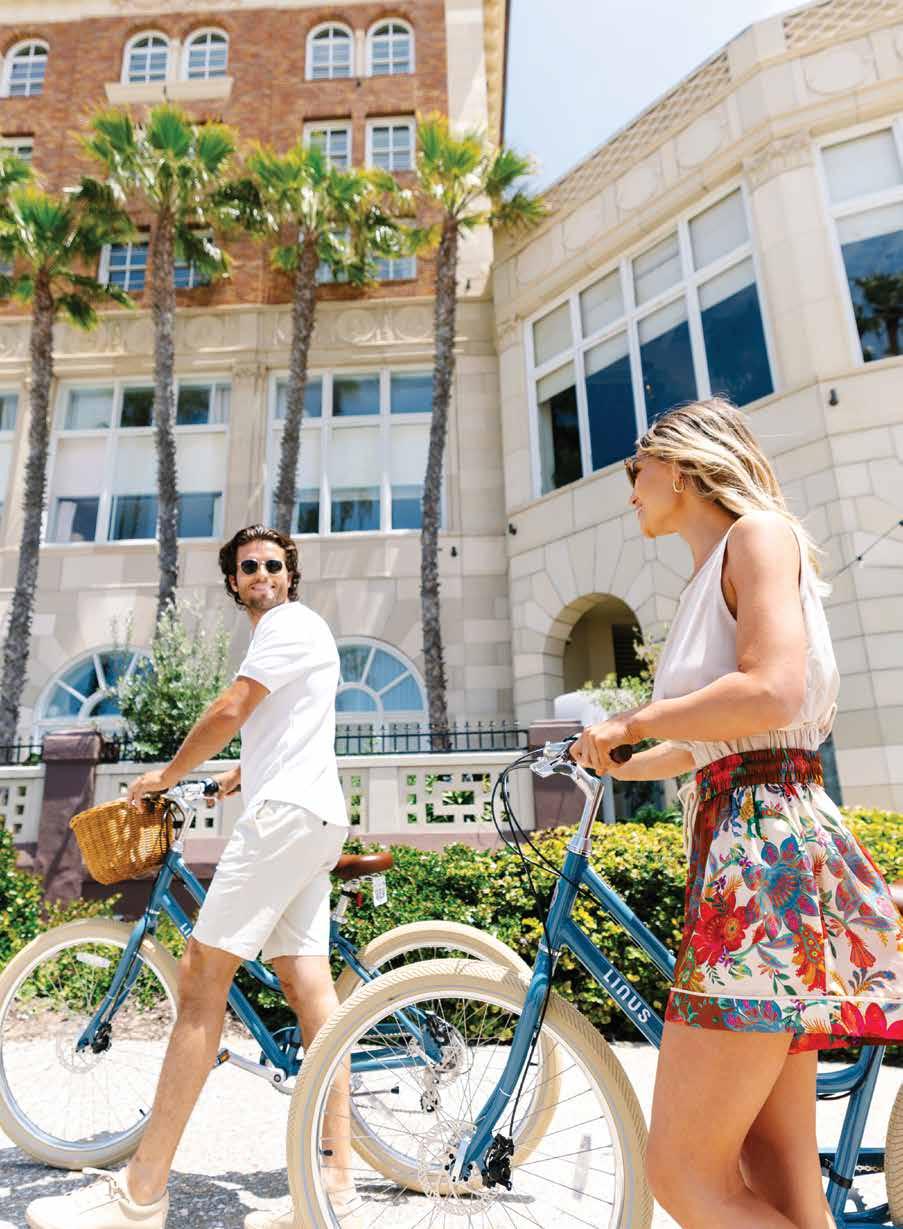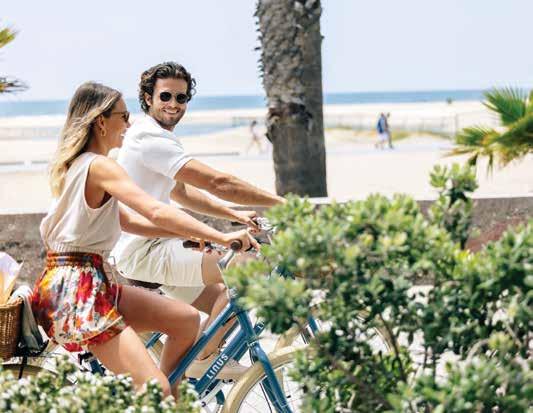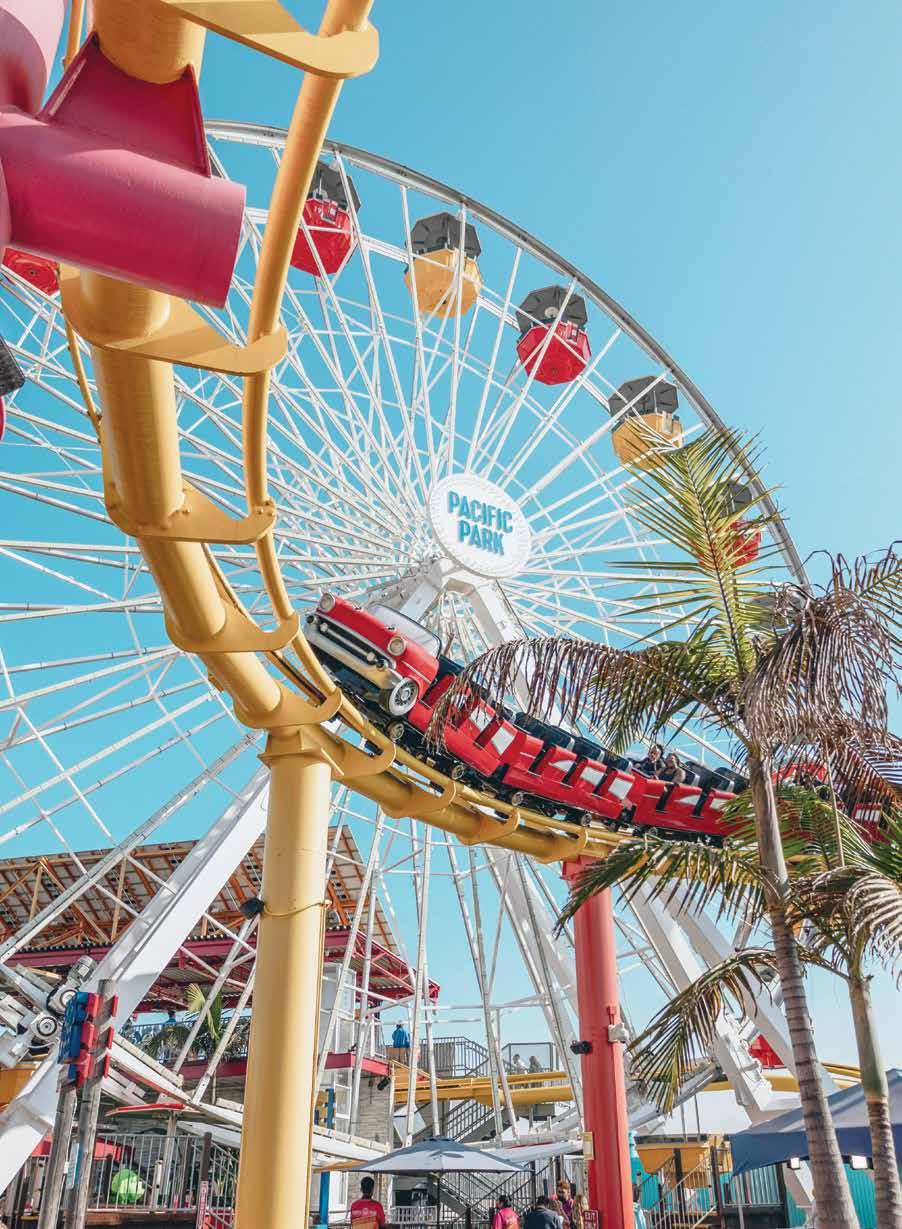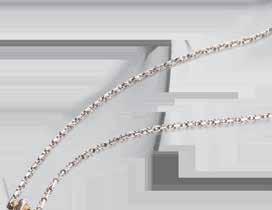ROYAL HAWAIIAN CENTER
CEO & PUBLISHER
Jason Cutinella
SR. GLOBAL EDITORIAL DIRECTOR
Brian McManus
EDITORIAL & CREATIVE
VP FILM
Gerard Elmore
DESIGNER
Coby Shimabukuro-Sanchez
CONTRIBUTING WRITERS
Armella Stepan
Anne Wallentine
CONTRIBUTING PHOTOGRAPHER
Tim Aukshunas
GLOBAL DESIGN DIRECTOR & CREATIVE PROCESS
Chelsea Vaccaro
OPERATIONS
VP GLOBAL DEVELOPMENT & STRATEGIC OPERATIONS
Merri Gruesser
OPERATIONS DIRECTOR
Sabrine Rivera
CORPORATE AFFAIRS
Joe V. Bock
ADVERTISING
VP SALES
Mike Wiley mike@nmgnetwork.com
VP GLOBAL PARTNERSHIPS
Claudia Silver claudia@nmgnetwork.com
GLOBAL BRAND PARTNERSHIPS
Marly Graubard marly@nmgnetwork.com
SENIOR DIRECTOR, SALES Alejandro Moxey
Published by: NMG Network 41 N. Hotel St. Honolulu, HI 96817
©2024 by NMG Network, LLC. Contents of Waves are protected by copyright and may not be reproduced without the expressed written consent of the publisher. Waves assumes no liability for products or services advertised herein. Waves is a semiannual lifestyle publication of ETC Hotels.
image by Blake Abes
Between breezy beach activities and sunny hangout spots, there is never a shortage of things to do in Santa Monica. Even beyond the beach, there are endless cultural events to explore. We’ve rounded up the best local happenings you shouldn’t miss this season, from exciting events and cultural festivals to must-see exhibitions and outdoor activities.
This fall, “Art & Science Collide” in the Getty’s latest PST ART initiative, which is taking over Southern California museums with more than 60 exhibitions grappling with the fascinating and visually stunning intersections of art and science. Museums across Los Angeles will host related exhibitions through spring 2025, with several Westside highlights like the Hammer’s “Breath(e): Toward Climate and Social Justice ,” which will include an installation involving live bees by the artist and beekeeper Garnett Puett. The buzz is real.
The Getty itself is mounting several intriguing exhibitions exploring light
in varied mediums like photography and holography. Meanwhile, the Fowler Museum at UCLA will be lit up with “Fire Kinship: Southern California Native Ecology and Art” while the Skirball Museum focuses on the thought-provoking evolution of “trees, time and technology.” With such a broad range of topics within the scientific theme, there will be something for everyone—from cinephiles learning about the evolution of color in film at the Academy Museum to history buffs exploring Cold War surveillance technology at the Wende Museum.
Technophiles will also enjoy the Digital New Arts (DNA) Festival , which is hosting digital art exhibitions, installations, and performances at Santa Monica’s creative institutions like the cluster of galleries at Bergamot Station and the contemporary art space 18th Street Arts Center through November. The final, avantgarde event on November 21 interprets holographic and 3D imaging technology
There’s so much to see by the sea.
Ikeda Point of No Return, part of Hammer’s “Breath(e): Toward Climate and Social Justice.”
images courtesy Skirball and PST Art
Must-Do Santa Monica text by Anne Wallentine
through a modern dance performance. For those interested in more theatrical arts – and thrilling acrobatics— Cirque du Soleil’s KOOZA is playing at a Big Top near the Santa Monica Pier from October 19 to December 1. It’s a fitting homecoming, as the dazzling and daring acrobatic troupe made their U.S. debut in Santa Monica in 1987.
You can always walk, run, roller-skate, or bike along the iconic Santa Monica State Beach path. To mix up your motion for the season and find some holiday cheer, grab a pair of ice skates at the popular pop-up rink Ice at Santa Monica between November 8 and January 20.
The Santa Monica Farmer’s Market is a year-round favorite and a must-notmiss while in town. Held on Wednesdays, Saturdays, and Sundays, it’s a joy to stroll through the colorful stands and seek out the freshest seasonal produce. Local chefs (and those in the know) tend to haunt their favorite stalls on Wednesday, which is also the largest of the markets.
Ready to laugh? Check out the latest lineup at The Crow comedy club, located in Bergamot Station—and then head next door to Birdie G’s for classic homestyle dishes that have won the restaurant a place on the Los Angeles Times’ 101 Best Restaurants list. If you’re seeking an inspiring musical evening, try the Broad Stage for emotive jazz and classical concerts, like the accomplished, moving
violinist Lucia Micarelli’s performance on February 22. The Broad Stage also hosts the National Geographic Live series, which features stimulating stories about the natural wonders of the world.
To find the latest fashion trends, peruse the window displays of Montana Avenue’s many highly curated, high-end boutiques. The shopping street offers a lovely stroll and many cozy cafes and bakeries for a break between shops. On the first and fourth Sunday of each month you can also browse for vintage treasures at the Santa Monica Airport Antique Market.
The Frieze Los Angeles art fair descends on the Santa Monica Airport again on February 20-23. Last year’s event showcased nearly 100 galleries with work by leading global contemporary artists and a variety of local installations and collaborations. 2025’s fair promises the same infusion of energy from the international art jetset and a ripple effect that inspires art activations at galleries across Los Angeles.
In 2025, the City of Santa Monica will also mark its sesquicentennial: the 150th anniversary of its founding as a town through the land-lot auction organized by Senator John P. Jones and Robert S. Baker. The City and its cultural institutions are planning a variety of celebrations throughout the year to honor and examine how the city has evolved—and continues to—through its vital cultural life.
Tree of Knowledge at Skirball
Welcome to the only bibulous column you need: our guide to the classic concoctions and innovative blends being shaken up by Shutters on the Beach’s own bartending teams. Whether you’re hosting a hotel soiree or a cozy evening at home, here we’ve provided you with moreish, seasonal aperitifs that will complement any occasion. In this go around, we’re highlighting two incredible cocktails that are sure to set the mood.
ROSEMARY PUNCH
Punch has a long and varied history with its myriad combinations of spirit, citrus, and spices. Shutters’ Rosemary Punch is a perfect fall or winter cocktail. The first bright, crisp sip is followed by warming rosemary notes and a dry, bubbly finish that will keep you coming back for more.
Ingredients
• 2 oz gin
• 1.5 oz cranberry juice
• 1 oz rosemary simple syrup
• 0.5 oz lemon juice
• Prosecco to top
• Rosemary sprig for garnish
Instructions
Pour all the ingredients into a shaker except for the prosecco. Shake for 10-15 seconds and pour the entire contents into a white wine glass. Add fresh ice until it fills the glass halfway. Top with prosecco, and then add the garnish.
BLACK BOULEVARDIER
The Boulevardier cocktail originated in the late 1920s, ascribed to the founder of a magazine with the same name. This riff on the classic swaps the original vermouth for coffee liqueur to add a richness to the drink’s strong backbone of Campari.
Ingredients
• 1 oz whiskey
• 1 oz Campari
• 1 oz Mr. Black’s Cold Brew Coffee Liqueur
• Lemon twist for garnish
Instructions
Pour all the ingredients into a mixing glass with ice. Stir for 20-30 seconds until the drink is sufficiently chilled and diluted. Strain over a large cube placed in a rocks glass and garnish with the lemon twist.
A little something to get us started before we dive into Waves .
Aperitif
image by Blake Abes
“
Designs with history and character.”
The dynamic duo behind the design firm talks inspiration and look at what’s ahead.
Nickey Kehoe, an interior design firm founded by Todd Nickey and Amy Kehoe, thrives on the harmonious balance of their diverse design backgrounds—retail for Todd and hospitality for Amy. This dynamic partnership fuels their creativity, allowing them to seamlessly navigate between intimate residential projects and the faster-paced demands of hospitality design. Their early days in Los Angeles were marked by the challenge of building a trusted network of collaborators, a process that took years but now forms the backbone of their studio’s success.
Their design philosophy is rooted in the belief that every space should reflect the client’s personality while being warm and welcoming. Listening is key, as is creating timeless spaces that feel lived-in and thoughtfully curated. With a focus on lighting as the “jewelry” of a home and an affinity for incorporating vintage and antique pieces, Nickey Kehoe layers their designs with history and character, ensuring every project tells a unique story.
What sets the firm apart is their storefront (7266 Beverly Blvd), which acts as a creative
laboratory where they can test ideas and explore new inspirations. There, the two are able to test-drive new products and see what’s resonating. This hands-on approach keeps their designs fresh while maintaining a timeless quality, often grounded in historical references. With exciting projects like a new outpost in New York and the unveiling of a new lobby design for Shutters on the Beach in December, Nickey Kehoe continues to evolve, blending past and present with thoughtful, enduring design. We sat down with Amy Kehoe to hear about what’s on tap for the burgeoning firm.
How did your diverse backgrounds—retail design for Todd and hospitality design for Amy—shape the vision and identity of Nickey Kehoe?
Being nimble, staying open, and continuing learning have all been facets of how we’ve worked since the beginning. During the early years, we were able to take on a wide range of projects, from residential to hospitality, drawing on our different backgrounds. Bouncing between the intimate nature
Style Profile: Nickey Kehoe
Nickey Kehoe
by Jaime Walters
Todd Nickey and Amy Kehoe of Nickey Kehoe. Photo by Yoshi Makino.
Above: Rich green cabinets, marble, and brass hardware blend timeless elegance, while copper pots add warmth to this sophisticated kitchen. Right: Vintage baskets, stools, and floral-filled containers create a charming vignette against a backdrop of rich purple patterned wallpaper.
of residential clients and the robust pace of hotel work invigorates the studio.
Could you share more about the early days of Nickey Kehoe? What were some of the key challenges you faced when establishing the firm?
Building your team of trusted workrooms and collaborators is one of the backbones of success for any studio. There was some trial and error when we were new to Los Angeles. We have several collaborators whom we met 20 years ago and are still our most trusted partners. However, building that community took a long time, and we are very proud of the long-lasting relationships that we have established. Design relies on so many people, and finding the right ones can be one of the most challenging aspects.
How do your individual design sensibilities complement each other when working on projects?
We are in sync aesthetically, yet there are discoveries each of us brings to the table that surprise us both. This makes working together an endless inspiration. It’s akin to having another set of eyes in the world. Just having the other person’s trusted,
valued eye can bring enormous benefit to a project. There is a shorthand—we can walk into a design meeting or space and quickly offer a “what if the room was this” or “what if you moved this wall.”
How would you describe the core design philosophy of Nickey Kehoe?
We strive for our projects to feel like a reflection of our clients and for these spaces to be welcoming. Listening is a core value and helping our clients create long-lasting, unique collections.
What are some key principles you adhere to when transforming a space?
We say this repeatedly: lighting is the jewelry of the home (or space) we are working on. We focus a lot of our energy on lighting, from custom to vintage. After initial concepts, we begin with lighting as the main narrative while working in our key mood development.
Can you walk us through your design process when you first take on a new project?
Prior to taking on a project, it’s important that both the designer and the client are
Man’s best friend sits regally before a patterned club chair, gazing out a picture window to a lush green garden beyond.
Left: A checked club chair nestles in a sunlit corner, framed by windows and garden views. A vibrant floral arrangement brings the outdoors inside. Above: Celebrating nature, a lush potted plant on a demilune table pairs with leafy wallpaper and framed botanicals for an organic, curated feel.
interviewing each other. Projects are multiyear and even longer at times. Having a strong partner is imperative, as is sharing values.
From there, we will work on initial research, including significant historical references or interesting location facts. We like to start with mood imagery to establish a narrative with our clients before moving into the design development.
Design development, or DD, is where all the details live, and drawings begin.
How do you select and integrate vintage finds and hand-picked goods to enhance the timeless quality of your designs?
Vintage and antique furnishings make up approx 50% of what is installed in our residential projects. For hospitality, we will source vintage lighting and case goods or tables, but we steer away from [vintage] seating due to the high traffic and usage. There is endless character in vintage and antique furnishings. We feel our projects need and benefit from
these curated pieces’ patina and unique beauty. These unique pieces create layers of interest and tell stories for our eyes.
How do you ensure that your designs remain timeless while also reflecting current trends and client desires?
Looking to the past—our collection of books and magazines are constant reminders of interiors that stand the test of time.
How do you see Nickey Kehoe evolving over the next decade?
We are very excited about our presence in New York. We just opened a second location on 49 E. 10th Street.
What are some of the upcoming projects or collaborations that you’re particularly excited about?
We have a few historic homes we are working on in Los Angeles and, of course, Shutters on the Beach! It’s been a thrill to work on such a beloved icon.
A sleek black steel door contrasts with bold blue patterned wallpaper, setting a modern tone as the staircase invites you inside
The Frederick R. Weisman Foundation must be seen to be believed.
Imagine acquiring piece-by-piece one of California’s most impressive contemporary art collections, filling your house with these museum quality artworks and then sharing them with the world. The late businessman Frederick R. Weisman and his wife Billie Milam Weisman did just that in 1994 when they officially opened their grand Mediterranean Revival style house to the public after years of private tours. Since then, the house and sculpture-filled grounds of the Frederick R. Weisman Art Foundation, on a steep canyon in Los Angeles’ posh Holmby Hills neighborhood, have been open to the public most weekdays for free, guided tours.
This one-of-a-kind art tour gives visitors the experience of seeing artworks out in the wild, rather than within a white cube, white-walled gallery or a frosty museum setting. Instead, art fills every room, walls and even some ceilings of the well-lived, 1928-built manse decorated with upholstered chintz-covered furniture and personal effects. Frederick Weisman’s photos are at bedside, his ties still hang in the closet and a cheery photo of him sits next to a striped Frank Stella. In the photo, his bold tie’s colors coordinate with the painting. “Basically, everything is as when we were living
here,” explains Billie Milam Weisman of her late husband Frederick’s (Fred) intentions. “Fred wanted all the furnishings, and everything left when we moved out.” And that everything is a remarkable treasure trove of 400 works of blue-chip modern art by 175 artists.
Visitors’ wows start at the front door where a brilliant Fernand Léger mosaic is to the right; inside the grand foyer, the stairwell is topped by a Keith Haring Radiant Baby diptych while a Helen Frankenthaler bronze screen sits close by. Architecture is superlative too: Gordon B. Kaufmann was the original architect, known for the Greystone Mansion a/k/a the Doheny Mansion and the 1935-built Los Angeles Times building. Outside there are monumental sculptures dotting the manicured grounds by Fernando Botero, Henry Moore, L.A.-favorite son Robert Graham and other art-world bold names.
Guests can picture themselves lying in bed and waking up to Ed Ruscha’s lacquered wood folding screen, Remember and Forget, of blue clouds and Elvis Presley song lyrics in relief. Or looking out across the TV room to Red Grooms’ painted collage sculpture of Venice, with famed modern art
Weisman Foundation
The one-time home of Frederick R. Weisman and his wife Billie Milam was opened to the public in 1994.
collector and patroness Peggy Guggenheim holding court on her palazzo’s terrace overlooking the Grand Canal. Her house museum (now called the Peggy Guggenheim Collection) in part inspired Weisman’s decision to open his house to the public.
“Fred was so in admiration of Peggy Guggenheim, and he also wanted to call this the Frick [the Frick Collection on New York City’s upper east side] of the West. He absolutely thought that it was phenomenal that she had the house museum, but this is even more personal because they took a lot of her furnishings out of her house,” further elucidates Billie Milam Weisman. Works by well-known artists are juxtaposed carefully but do not follow a chronological or even alphabetical order. They do reflect Weisman’s sense of humor and eclectic tastes. “He was very quirky and he was brilliant in a very entrepreneurial way,” Weisman says her businessman husband who helped establish Hunt Foods and was one of the first Toyota distributors in the U.S. He began collecting in the 1950s and continued pursuing his passion throughout his life until his death in 1994. His approach to
acquiring art came from the heart. “He taught me—just use your eyes and your heart,” and to find work that spoke to her, Mrs. Weisman explains. She defers when asked to name her favorite piece. “Every day I gravitate towards one or the other and different times through the day when the sunlight comes in. I have many favorites,” she says.
The array of standouts inside the house is impressive and includes major work from the vibrant black-and-yellow Clyfford Still abstract in the entry foyer to an early Willem de Kooning Dark Cloud, painted utilizing house paint, and his figurative Pink Angels, representing a turning point in his career. A Mark Rothko color field painting dominates the living room under ornate stenciled beam ceilings. A granite Wave in Space coffee-table like sculpture by Isamu Noguchi sits alongside a chintzcovered couch. The dining room is a surrealist dream with bowler-hatted men under crescent moons via The Mysteries of the Horizon by Rene Magritte and one of his figurative woman’s bronzes along with works by Joan Miro and Max Ernst (also famously collected by Peggy Guggenheim).
“I don’t think there’s anything that communicates better than art. It’s quicker than language and clearer than philosophy.”
Right:
Fredrick R Weisman. Next spread: In the home, art abounds, featuring pieces from Warhol, Picasso, Ernst, Haring and many more.
When the house overflowed with artworks, the couple added an annex designed by Gehry protégé, architect Franklin Israel in 1992. Upstairs under a soaring ceiling are larger pieces by Frank Stella and Donald Judd plus two mixed media motorcycles hand painted by Keith Haring; downstairs a complete series of Ten Marilyns by Andy Warhol is tucked under the staircase. To be able to see such an impressive array close-up is a gift. Billie Milam Weisman explains her husband’s altruism thusly, “He really felt so blessed that he was able to have all of this that he really felt an obligation not only to share, because people deserve to see it, but he felt you owe it to the artist if you have it, you shouldn’t hoard it and lock the doors, you should share it.”
Although works were moved frequently when Frederick Weisman was alive, except for a rare exhibition loan, the layout is almost exactly how he envisioned it. In addition to those on display, the Foundation owns about 1,700 works in total, which are available for loan to other institutions. Recent exhibitions include a contemporary art overview at California State University Los Angeles (curated by
Billie Milam Weisman) in 2024 that featured 50 works from the collection. Recognized for his cultural philanthropy, Weisman’s legacy includes funding the Frederick R. Weisman Museum of Art at Malibu’s Pepperdine University and the architect Frank O. Gehrydesigned, Weisman Art Museum (WAM) at the University of Minnesota, Minneapolis.
There are some restrictions and special conditions for Foundation visitors due to the location within a home in a very upscale neighborhood: there is no street parking allowed and no walk ups. Tour reservations must be made in advance via phone (310) 277-5321 or email (tours@weismanfoundation. org). Photography is not allowed inside the house and no bags are permitted inside; bags, purses, etc. can remain in cars parked in the Foundation’s gated driveway. The tour includes the need to walk up-anddown stairs including those to the annex, which are dramatic and architectural.
Tours are scheduled Mon.-Fri. at 10:30AM or 1:30PM Further information can be found at weismanfoundation.org.
Art at the Weisman Foundation isn’t just hung, sometimes it’s made.
The historic filming location Paramount Ranch gets another shot at the limelight.
Twenty miles northeast of Malibu lies a riparian, chaparral-studded landscape rife with California sage brush, sycamore and old oak trees, red-tailed hawks, coyotes and deer, and miles of snaking trails. But unlike its neighboring parcels, this swath of land achieved celebrity status by garnering more screen time than most A-list actors. A masterful shapeshifter, the enchanting acreage has provided a characteristic backdrop for upwards of 500 film and television productions, from recreating the ruggedness of the American West to futuristic Star Trek: The Next Generation scenes born of imagination.
In 1927, movie-making powerhouse Paramount Pictures purchased 2,700 acres in the Santa Monica Mountains. The studio built a series of versatile foundational buildings—a barn, pavilion, and prop shed—in the southwest corner that would anchor temporary set pieces for wildly diverse genres. Paramount Ranch rarely played to type—posing as a Welsh mining village in How Green Was My Valley, medieval England in The Adventures of Robin Hood, an African savannah in
Trader Horn, an Indian jungle in The Jungle Book, and the banks of the Mississippi River in The Adventures of Tom Sawyer Throughout the “Paramount Era,” as it came to be known, Paramount Ranch brought more than 130 films to life and served as a multidimensional stage for the likes of Gary Cooper, Jimmy Stewart, Marlene Dietrich, and other acting royalty to hone their craft.
With the decline of Hollywood’s Golden Age, budget constraints and shifting moviebiz dynamics prompted the studio to sell Paramount Ranch in 1943. Filming continued as production companies (including Paramount Pictures) routinely leased ranch space for everything from big-budget pictures to indie films and commercial shoots. As time marched on, the ranch’s facilities became weathered and worn, and the once-waitlisted filming hub booked fewer and fewer clients.
In 1953, an enthusiastic landowner breathed new life into Paramount Ranch, commandeering 326 acres on the southeastern edge. A lifelong fan of Western movies, William Hertz constructed Western
The Paramount Ranch has brought to life 130 films over its long tenure. Image courtesy of Paramount Ranch.
Tim Aukshunas
Lindsey Vandal
Multiple Westerns productions have called Paramount Ranch home, including “Gunsmoke,” “Wanted: Dead or Alive,” “The Rifleman,” and “Have Gun Will Travel.” Image courtesy of Paramount Ranch.
Town—a mock-up of a typical Wild West Main Street circa late-1800s that became a valuable asset for projects in the genre. He leveraged abandoned set pieces, props, and other recycled materials to craft facades of an authentic-looking saloon, hotel, and jail, and attached them to the original Paramount-Era buildings. During the “Hertz Era,” several iconic television shows—The Cisco Kid, Gunsmoke, Tombstone Territory, and The Lone Ranger—would add Paramount Ranch to their closing location credits.
“Growing up in New York, my grandfather dreamed of becoming a cowboy—so much so that he ended up selling everything and heading out West,” says David Hertz, William’s grandson. “He and his wife Betty enjoyed reviving the history of the ranch, and they also did fox hunts, equestrian shows, horse parades, and fundraisers here.” In 1955, William sold his stake in the ranch to a trio of investors who installed a two-mile sports car raceway on the property. Though the course was deconstructed a year later due to safety concerns, Paramount Ranch Raceway gained immortality after appearances in several films, including the racing drama The Devil’s Hairpin and Disney’s The Love Bug.
Paramount Ranch saw a number of private owners throughout the 1960s and 1970s. Despite the instability, Western Town remained a scene-setting vehicle for hit series such as BJ & the Bear, CHiPs, Charlie’s Angels, and M.A.S.H. In December of 1972, photographer Henry Diltz held a daylong photo shoot at the ranch with members of the classic rock band The Eagles, producing two legendary images that were featured
on the front and back covers of the band’s Old West-themed Desperado album.
In 1980, two years after Congress designated 153,000 acres as the Santa Monica Mountains National Recreation Area, the National Park Service purchased roughly one-third of Paramount Ranch, including the central hub of filming operations where Western Town stood. Thanks to insight from Robert Hertz, William Hertz’s son who helped build Western Town as a 20-year-old, and black and white photos of the Hertz Era transformation, the National Park Service was able to successfully restore the timeworn Western Town set.
Over the next two decades, a revitalized Paramount Ranch accommodated a variety of mainstream productions, including The Dukes of Hazzard, The X-Files, and Dr. Quinn, Medicine Woman. The ranch harbored numerous sets for the debut season of The Mentalist in 2008, the Clint Eastwood-directed American Sniper in 2014, and the highly acclaimed HBO sci-fi series Westworld in 2015.
Beginning on Nov. 8, 2018, disaster struck as the Woolsey Fire grew to 100,000 acres in Ventura and Los Angeles Counties, including Paramount Ranch. Only two structures on the ranch survived the blaze— the white chapel prominently featured in Westworld and the recurring train depot from Dr. Quinn, Medicine Woman
While the media focused on the downfall of Western Town, losing the original buildings erected by Paramount Pictures in the 1930s was an even greater setback. “What people saw on the outside was actually
As production ebbs and flows, the ranchland remains an idyllic gathering place—often hosting ranger programs, classic movie nights, star parties, and music festivals.
Above: On the 1939 set of “Geronimo,” filmed at Paramount Ranch. The movie starred Preston Foster and Chief Thundercloud. Image courtesy of Paramount Ranch. Left: Paramount Ranch, present day. Image by Tim Aukshunas.
masking the historic structures buried underneath those restored sets,” says Jody Lyle, Superintendent of Santa Monica Mountains National Recreation Area.
“After the fire, we all knew something had to be done,” she adds. “We started thinking of how we could recreate the infrastructure of Paramount Ranch so it could again be a place where cinematic visions can come to life.”
With $26 million in federal disaster funding and additional support from Santa Monica Mountains Fund, the park’s official philanthropic partner, construction began in 2023 on a fresh pavilion, prop shed, barn, and restrooms in the footprints of the Paramount Era buildings. Scheduled for completion in spring of 2025 by contractor AMG & Associates, Inc. of Santa Clarita, California, with San Francisco-based Architectural Resources Group leading the design, the reconstructed Paramount Ranch hub will offer the local production community a key resource for dynamic set creation. Instead of replicating the original dirt floors, the new fire-safe buildings are set to be fully finished, providing flexible indoor and outdoor event spaces for use during filming breaks.
Lyle and fellow Paramount-Era champions view the restoration as an investment in a cinematic time capsule of sorts: “This was a place where people came together to create,” reflects Lyle. “You can see that creativity change over decades with the evolution of film, the film industry, and film
storytelling—and we are honored to continue that evolution.” To that end, the National Park Service plans to work closely with film companies, partner organizations, and volunteers to build out a series of modular movie sets that will enable visitors to learn about the ranch’s film-focused history.
One of the most extraordinary facets of Paramount Ranch under the National Park Service’s authority has been the rare opportunity for visitors to observe filming in action on the sidelines of live sets. But even as the production side ebbs and flows, the ranchland remains an idyllic gathering place—often hosting ranger programs, classic movie nights, star parties, and music festivals—and a gateway to the natural world, thanks to wellmaintained pathways for scenic trekking, wildlife viewing, and horseback riding.
For David Hertz, who joined the fundraising efforts of the Santa Monica Mountains Fund and has high hopes for an eventual rebuild of Western Town, Paramount Ranch is a goldmine of memories of adventure hikes and afternoons spent listening to stories from his father, who passed away in 2007. “I have the cowboy hat and horsehair riding bridle he used on set as an extra in many of the Western movies,” David recalls. “These are incredibly powerful moments that connect us to a sense of place.”
Paramount Ranch is a quick trip up the PCH from Hotel Casa del Mar and Shutters on the Beach. Just take a right at Malibu.
Through the years Paramount Ranch has seen “The Dukes of Hazzard,” “The X-Files,” and “Westworld” all bring their productions to its vast acrage.
IIf variety is the spice of life, Club Casa del Mar offers a prodigious degree of seasoning.”
How a corner of Los Angeles became a different kind of bean town.
“Life is like a box of chocolates,” as Forrest Gump famously said. But what goes into filling that box? Los Angeles’ Westside has a plethora of artisanal styles to choose among: from a renowned bean-to-bar chocolate maker, to chocolatiers creating classic and modern confections, to a company using cacao for food, drink, and skincare products. Each one’s distinctive approach evinces LA’s respect for handcrafted, high-quality foods and the unending quest to make the very best chocolate.
Chocolate makers, such as Letterpress Chocolate, are responsible for the intricate process of turning cacao into chocolate. This starts with sourcing and fermenting cacao beans, then roasting, winnowing to remove the shells, grinding the nibs into chocolate liquor, conching to develop flavor, and finally tempering to achieve a stabilized and glossy bar of chocolate. Chocolatiers—like Milla Chocolates and John Kelly Chocolates—take that chocolate as their medium and add flavors and ingredients to transform it into candies, confections, and treats.
It’s akin to “the difference between a bartender and a distillery,” explains
Letterpress co-founder David Menkes. With its end to end, labor-of-love process, Letterpress is one of only a few hundred bean-to-bar chocolate makers in the U.S. They offer factory tours that detail the direct trade relationships and processes that go into stocking their Culver City storefront. Theirs is a principled, studious approach; rather than Willy Wonka-esque flash, their chocolate speaks for itself.
Their smooth, slim, and snappy single-origin bars melt into a symphony of flavors on the tongue. While all are 70% dark chocolate, each one is idiosyncratic, from peanut butter notes (Sao Tome) to floral and fruity (Ecuador, Tanzania) to spicy (Jamaica). “We try to get the best cacao we can possibly find anywhere in the world, and just get out of its way,” Menkes says. Theirs is a purist’s chocolate, for those who want to understand the variety of the medium and the terroir of each region of the equatorial cacao belt.
A former animator, Menkes designed their logo in the style of an airmail stamp, which gets molded into their bars and embossed on their packaging. On a given day, Menkes and his co-founder and wife Corey Menkes can be found working side by side to produce 250-
The chocolates at Mille.
New Waves of Westside Chocolate images by Tim Aukshunas text by Anne Wallentine
500 bars (and once achieved 1100 for a rush order). Their Peruvian Ucayali bar remains their most popular, although Menkes says that this year’s Bolivian release, in honor of their tenth anniversary, is his new favorite.
“We have never made a finished bar of chocolate,” Menkes says. “Every single batch is an experiment, and we change things, and we tweak things, and it’s just a constant evolution of trying to make better and better chocolate.”
While Letterpress produces a smooth, European-style chocolate, ChocoVivo’s Patricia Tsai was first inspired by the gritty, Oaxacan style of chocolate, which is stoneground and not conched or tempered. Tsai started the business in 2009 at a farmer’s market stall, and now operates a Culver City café that highlights the Mayan history of chocolate as a spiritual drink.
“What I truly love is the historical context of chocolate,” Tsai says. In the Classic Maya period, from 250 C.E. to about 900 C.E., “chocolate [was] not only food, but medicine and currency.” The Maya made ground cocoa into a bitter drink that was believed to promote health, and used cacao beans for barter, tax, and tribute.
Tsai sources cacao solely from the Jesus Maria plantation in Tabasco, Mexico, calling grower Vicente Gutierrez “my Yoda,” as he helped to introduce her to the practices of chocolate making. Last year, Tsai explains, the business shifted to conching and tempering their chocolate “in order
to scale.” They are also expanding into skincare products using cacao butter.
Tsai sees chocolate as “food…not confection or candy,” she says. Along with a line of chocolate bars, ChocoVivo offers a menu of traditional chocolate drinks of varying intensities. The rich, eye-opening 100% cacao is diluted only with water. For a sweeter experience, there are also American- and European-style chocolate drinks which can be customized at lower percentages of cacao, and with or without sugar.
“What we try to do is embrace this bitterness,” Tsai says. “If it’s all just monotone sweetness, where’s the fun in that?”
There’s beautiful variety and balance in the luxe, geometric bonbons chocolatier and founder Christine Sull Sarioz creates for Milla with artistic flair. Sull Sarioz opened her Culver City storefront in 2018, after first learning the craft at Santa Monica’s Gourmandise School. “I went into chocolate because I wanted to create things to share,” she explains.
With a background in art, Sull Sarioz and her creative director husband Goktug Sarioz co-designed the minimalist, Bauhaus- and Art Deco-inspired aesthetic that unites the shop, packaging, and products. The crispedged, architectural bonbons melt into luscious fillings like coffee, cardamom, and black sesame caramel, as well as cocktailinspired flavors like kir royale, Manhattan, and Champagne. Milla’s flavors are often
Culver City’s Letterpress makes the best chocolate in the city, from bean to bar.
inspired “from travels – I’m from Korea, my husband’s Turkish, so a lot of that comes into play in terms of ingredients,” Sull Sarioz says. There are many nut options as well, including an extremely moreish hazelnut praliné bar that remains a perennial favorite among customers.
“When I started making chocolate, I just loved how you could create so many different things with it, different flavors [and] different shapes,” Sull Sarioz says. She translated this interest into thematic shapes for her creations: the Manhattan bonbon is a tiny, fluted tower to symbolize the high-rise city, while the small circle atop yuzu’s square echoes the Japanese flag.
Milla currently sources single-origin chocolate from the Dominican Republic and Peru to create their confections. “We focus on trying to find the best quality possible,” Sull Sarioz explains, “and also just sharing the joy and having [chocolate] accessible as a gift.”
Given its origins in Hollywood, John Kelly is a go-to gifting choice for many of the entertainment elite: co-founder John Kelson says its regulars include A-listers like Keanu Reeves, Renee Zellweger, and Disney CEO Bob Iger. While its small-batch production facilities have remained in Hollywood since its founding in 2004, its popular Santa Monica outpost has wafted enticing scents down Montana Avenue since 2012.
John Kelly is the combo-nym of co-founders John Kelson and Kelly Green, whose signature creation is the unique “truffle fudge bar” that was derived from Green’s grandmother’s fudge recipe. They tweaked the fudge to a rich, ganache-like consistency, enrobed it in chocolate, and then put the traditional truffle “size on steroids,” as Kelson explains, with 1 and 1.7 oz versions. The hefty 8 oz bars – meant to be sliced – look like ingots in their gold foil wrappings.
Kelson explains their aim was to create an “elevated version of a classic” using “higher-level ingredients” such as Belgian Callebaut chocolate and real bourbon in their bourbon fudge bar. Their range of flavors, “and just the nature of fudge itself, [are] classic,” Kelson says. The timeless combination of salty and sweet has made their bestsellers a dark chocolate bar with French grey sea salt, and a chocolate caramel with Hawaiian Alaea sea salt.
Between Kelson’s luxury retail background and Green’s advertising background, they soon earned spots for their chocolates at Neiman Marcus, and high-end grocers.
Even these diverse businesses that source from around the globe don’t encompass chocolate’s infinite variety— but they do provide a delicious taste of its possibilities in Los Angeles. It’s up to you to decide how to fill your own box.
Over its storied history, Casa del Mar has thrown wide-range of events for “people of culture.”
“If variety is the spice of life, Club Casa del Mar offers a prodigious degree of seasoning,” the August 1926 issue of The Casa del Mar avows. The opulent, Italian Renaissance Revival “house by the sea” had opened earlier that year as a private beach club, with $10 annual dues and a wealth of leisure and social activities for its eminent members.
In the Roaring Twenties—the days of prosperity and Prohibition—Santa Monica’s beachfront became known as the Gold Coast, home to exclusive clubs and mansions for Hollywood stars and moviemakers like Marion Davies, Norma Shearer and her husband Irving Thalberg, Louis B. Mayer, Darryl Zanuck, and Cary Grant.
Club Casa del Mar was easily entwined with this flourishing seaside society: Dr. H. Clifford Loos, a local resident and brother of writer Anita Loos (of Gentlemen Prefer Blondes fame), served as the club’s first president. Garnering over 2,000 members at its peak, the club boasted
a wide range of events for “people of culture,” including swims, teas, dinner dances, bridge parties, and balls.
This social whirl is deliciously documented in the club’s magazine. Dozens of issues from its founding through 1943 are preserved in the collection of the Santa Monica History Museum. The Casa del Mar (later restyled Del Mar Club Life) reveals the hotel’s Gatsby-esque heyday, breathlessly relating the glamour of its famous visiting celebrities, performers, and entertainments as well as its thriving beachfront sports.
“There have been such a plethora of celebrities, beauties and distinguished and gallant gentlemen disporting themselves upon the sands of late, that ye editor despairs of being able to even name them all,” a 1926 column in the club’s magazine despaired.
Actors Clark Gable, Greta Garbo and Leo Carrillo made regular appearances, while “attractive Gloria Stuart, popular actress
A copy of “The Casa Del Mar,” Later restyled “Del Mar Club Life,” nearly 100 years ago.
and daughter of Mrs. Fred Finch of Del Mar Club, is another charming celebrity who spends many of her leisure hours enjoying our beautiful beach,” a May 1934 issue noted. The young woman photographed smiling on the beach in a bathing cap starred in pre-Code films and, many decades later, would become known for her role as the aged protagonist of Titanic.
The club also lived up to Prohibitionera notoriety with a speakeasy and slot machines—but the magazines remained circumspect about these illegal entertainments. In 1927, the social calendar listed a masquerade ball, a bewigged “Colonial Ball” celebrating George Washington’s birthday, and daily events including concerts and bridge on Monday, “fashion show promenades” every Tuesday, Radio Night on Wednesday, and dinner dances on Thursday and Saturday. By 1934, barbecues, dance lessons, and horseback rides had taken over most weekday slots, and bridge parties were relegated to
Friday. A “Gay Nineties Nite” took place in September, because “it’s a riot to be midVictorian for one evening. What larks!”
With such a robust social season, the magazine’s gossip and social columns were never short of fodder. In just one month, the club counted a Russian prince, a Mexican soprano, and visiting Pasadena and East Coast socialites among its visitors. Fashion never went unnoticed, either: a 1926 gossip column remarked on the daring and “intriguing” trousers worn by a lady—under a long coat—that were nevertheless “ravishingly becoming.”
Behind each issue’s brightly colored covers, decorated with mermaids and seahorses, beach sports took on equal importance with society reports. Men’s and women’s swim races, profiles on the season’s teams and swimming champions, surfing and volleyball competitions were recounted with gusto. The club also rolled out the red carpet to serve as the South Coast
Right: Club Casa del Mar was completed in 1926 and was also known as the Del Mar Club. Above: Three holiday issues of “Del Mar Club Life.”
Corinthian Yacht Club headquarters for the annual Pacific Coast Regatta.
Casa del Mar also hosted numerous benefit events, including an Easter luncheon and fashion show for 600 people in 1934. The club’s position as “the aristocrat of the beach,” as it was advertised in that same year, seemed assured. But 1941 saw the club appropriated by the U.S. Navy through World War II, and it did not attain the same prominence after its postwar reinstatement.
The club closed in the early 1960s, reopening as the contemporary hotel in 1999. Michelle Main, Director of Operations at Hotel Casa del Mar, says that this new incarnation revivifies the old club’s “vibrant and sophisticated luxury” and “timeless elegance.”
“The hotel has a relaxed, resort-like atmosphere, especially in the mornings,”
Main says. Some guests will start their day with a slow cup of coffee on the terrace while reading the news. On the weekends, joggers, surfers, and sunbathers abound, while sailboats drift by on the water. The lobby bar fills up towards the evening, with guests still as drawn by the drinks and regular musical entertainments as they were a century ago.
During the week, Main says, the restaurant Terrazza hosts “Santa Monica’s power breakfast and lunch crowd, where business deals often unfold over our famous ricotta pancakes.” While still a place for movers and shakers, given its beginnings as a private club, Main says, “the hotel continues to evoke a sense of exclusivity and intimacy. Many guests even tell me they try to keep Casa their little secret to ensure it remains their private oasis.”
After almost a century, the club’s lively, exclusive grandeur endures.
Waves: Upholding a grand tradition.
The non-profit organization Oceana forcefully advocates against marine plastic pollution and is doing much more to protect the world’s oceans, fisheries and sea life.
Earth’s oceans play a vital role in sustaining life. Protecting these sensitive environments is the core mission of Oceana, the largest international non-profit dedicated to ocean conservation. Backed by data and science, the organization works to foster policies and legislation which protect the world’s fisheries and endangered mammals such as Atlantic right whales. Now in 12 countries from the U.S. to the Philippines, the group continues to expand and support new technology to stop overfishing, oil and plastic pollution and the killing of threatened species from Soupfin sharks to California’s once prevalent giant sea bass.
“We view plastics as one of the key existential, long-term threats to the health of the ocean,” explains Geoff Shester, Oceana California campaign director and senior scientist. The Monterey, California-based marine biologist’s work includes leading underwater expeditions documenting the vibrant corals and indigenous fishes surrounding California’s eight Channel Islands, regarded as the Galapagos Islands of North America.
Plastic waste endangers underwater ecosystems. It’s a well-established ecofact that festive balloons pose risks to sea creatures but they are only the tip of the problem. “We’re seeing plastic at the deepest parts of Monterey Canyon to the floating Pacific garbage patch to plastics washing up over remote beaches and even throughout the water column,” he says. Often in micro-plastic form, these pollutants can be systematically traced back to one-use consumer plastics.
As an ocean advocacy group, the main concern overall is ocean viability. However, the reality is the world’s oceans are deeply impacted and increasingly threatened by human activities above and beyond the water. Hence Oceana’s attention to plastic waste and effectively dealing with its root causes.
While it might seem incongruous for marine biologists to become experts in plastics, over the last decade, Oceana’s scientists have come to understand waste management, plastics production and food production to better protect the
The organiztion helps wildlife across the globe.
Keeping the ocean’s animals and reefs free of plastic is a growing concern and mission of Oceana.
health of the globe’s sea water which cover 70% of the earth’s surface. “It is the things that we do on land that are determining what the result is in our oceans, because the oceans, unfortunately, are the ultimate downstream from our activities upstream,” points out Shester.
Oceana tackles reducing plastic pollution at its source. The non-profit continues to encourage e-retailer Amazon to reduce its reliance on plastic packaging, estimated at 208 million pounds in 2022 in the U.S. alone. An estimated 22 million pounds of Amazon’s plastic packaging globally will become marine pollution, Oceana found via a 2024 study.
In California, Oceana aided in the negotiations for Senate Bill (SB) 54. The legislation requires packaging manufacturers to reduce the use of polystyrene foodware, single-use plastics and eventually (by 2035) manufacture compostable and verified recyclable products. “We’re trying to make progress that is actually turning the tide and shifting us towards reducing use,” explains Shester of the legislative policies. Raising consumer
consciousness regarding plastic waste and encouraging reusable and refillable product systems are also on the agenda.
Protecting endangered marine animals from gillnet fishing is another prong of the group’s efforts and where they’ve had success in changing the status quo. (Gillnets are drifting, mile-long, mesh nets beneath the surface that indiscriminately capture wildlife from the intended catch to what’s known as bycatch, collateral creatures like sea turtles and even whales that are caught inadvertently).
To reduce the negative environmental impacts of gillnets, Oceana studied and helped develop an alternative for the U.S. West Coast’s swordfish fishery called deepset buoy gear, which is specific to catching swordfish. “Essentially it’s a smarter way to fish,” Shester explains of the deep-water line with baited hooks that’s retrievable due to a flotation device. Adding, “We’re not trying to get rid of fisheries off our coast. We want to support our local fishing communities, and we have partnerships with fisherman that are that are doing things more responsibly,” he says.
In California, Oceana aided in the negotiations for Senate Bill (SB) 54. The legislation requires packaging manufacturers to reduce the use of polystyrene foodware, singleuse plastics and eventually (by 2035) manufacture compostable and verified recyclable products.
Keeping the ocean’s animals and reefs free of plastic is a growing concern and mission of Oceana.
Additionally on the U.S. West Coast, Oceana is working towards reducing whale entanglements—when the marine mammals become entangled in fishing gear, which prevents them from surfacing to breathe or descending to feed. During Dungeness crab season, whales often become entangled in the vertical fishing lines between crab traps and surface buoys. Oceana funded and studied through 2,000 real world trials, ropeless gear and popup buoys. Shester explains how the novel technological solution works: Dungeness crab traps remain down on the seafloor until the fisherman is ready to pull it up aided by underwater acoustic signals (essentially a kind of underwater cell phone) that calls up the gear allowing it to surface when the fisherman are nearby.
Rather than whales swimming through thousands of these lines (and there are tens of thousands of crab traps out there during the season) the traps are ropeless until needed. “What this technology allows us to do is get the fisherman back out on the water and restore the ability to keep fishing in a way that’s whale safe.” Local seafood stays available for consumers and the environment
is protected—a win for all concerned. The enormity of the issues Oceana faces on behalf of the world’s oceans is daunting. Thinking positively and being optimistic about the ability of companies, governments and consumers to change course is key for organizers. “There is still a lot left to protect,” contends Shester.
Even 60 years ago, single use plastics were not in such widespread use; food can be packaged differently (think reusable water bottles and such); the marketplace can encourage the availability of refillable containers. Amazon has already reduced its use of plastic air pillows in packages, governments can adopt more protections for sensitive marine habitats and consumers can demand sustainably caught seafood. Says Shester, “The main thing is not to get discouraged.”
Oceana’s popular YouTube channel offers a wealth of information on sea creatures, habitats and the organization’s global advocacy efforts. For up-to-date information, follow Oceana on Instagram, Facebook or X. Find their website at oceana.org.
Oceana: Setting sail to save the ocean. “The main thing is not to get discouraged.”
It’s no secret that Southern California is an outdoor lover’s paradise, blessed with sunshine and temperate weather 12 months a year. Yes, it’s true—you can surf in the morning and hit the ski slopes by afternoon. But what makes the region truly special is how effortlessly locals weave the outdoors into their everyday routines. At Shutters on the Beach and Hotel Casa del Mar, the Concierge Team doesn’t only recommend activities—they live them. These outdoor enthusiasts lead by example, ensuring their guests experience the best that Southern California’s natural playground has to offer.
Jonathan Dyke, concierge at Shutters on the Beach and father of three, is no stranger to balancing family life with outdoor adventures. On weekends when he can manage to wrangle all the kids together, you may find them biking along the Santa Monica Beach bike path , starting from the Santa Monica Pier and riding as far as they can go along the scenic coastline. He swears by the timeless charm of Pacific Park and the Santa Monica Pier Ferris Wheel, which offers sweeping, panoramic views of the Pacific Ocean. “It’s the perfect way to start or end a family day,” Jonathan shares, adding that the Ferris wheel is a surefire hit for families.
For those who prefer to explore the inland beauty of the region, Jonathan’s colleague Willem de Geus is the go-to source. Originally from Europe, Willem found his forever home in Los Angeles, drawn by the seamless combination of sea, sun, and mountains. An avid skier and hiker, Willem regularly makes the five-hour drive to Mammoth Mountain during ski season, where he spends his weekends carving through fresh powder. However, when he’s back in Santa Monica, he satisfies his love of nature by hitting local trails like the Solstice Canyon Trail. “It’s the perfect mix of workout and reward,” Willem says. The trail offers a bit of history with scenic ruins, while also giving hikers breathtaking views of the Pacific from a ridge. Willem is equally committed in his day-to-day routine, often walking to work along Santa Monica’s beach paths, blending his passion for the mountains and the sea into his everyday life.
Hansel Cortez, from Hotel Casa del Mar, takes a more serene approach to the outdoors. A fan of quiet reflection, Hansel suggests the Temescal Canyon hike. Located within Will Rogers State Park , this beginner-friendly trail winds through lush greenery and offers stunning views of both
When in Roam:
Concierge Al Fresco Picks
text by Armella Stepan
the ocean and the Santa Monica Mountains. His favorite spot? Inspiration Point , a lookout that provides sweeping views of the Santa Monica cityscape, the Pacific, and beyond. “Temescal has some terrific picnic spots along the way,” Hansel says. “I always recommend guests grab a picnic to go from the hotel before they set out. It’s not just about the view; it’s about slowing down, enjoying a good meal, and letting the landscape relax you,” he adds, perfectly capturing the laid-back essence of Southern California.
What all three concierges agree on is that no stay in the Los Angeles area is complete without a private city tour early in the trip. “It’s not your typical bus tour,” Jonathon explains, “it’s about tailoring the experience to your interests—whether that’s seeing the Hollywood sign up close or getting insider tips on where to catch the best sunset views.”
From biking along the beach to hiking the rugged canyons, the concierge team at Shutters on the Beach and Hotel Casa Del Mar embodies the Southern California outdoor lifestyle. Whether you’re traveling to Santa Monica solo, as a couple, or with family, the Concierge team looks forward to guiding you wherever you may wish to roam.
